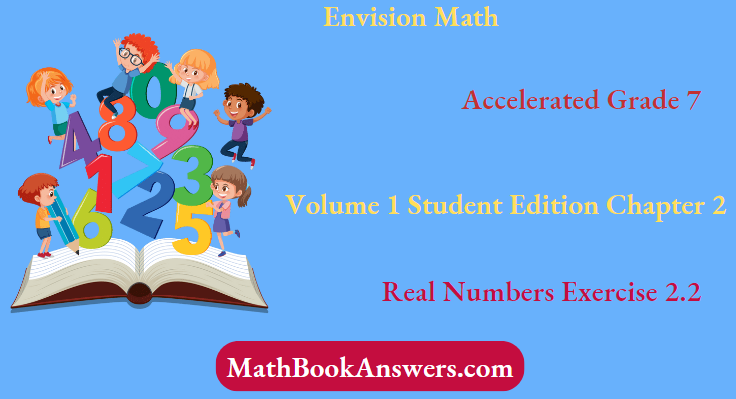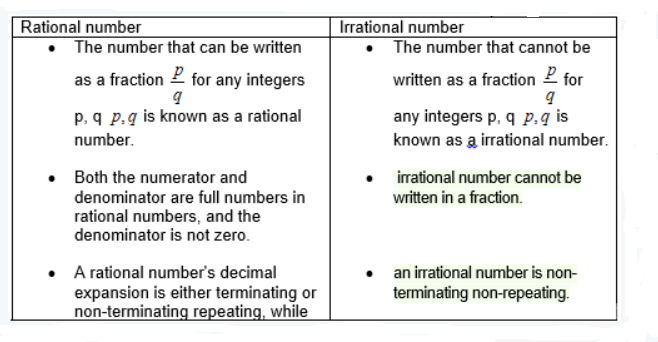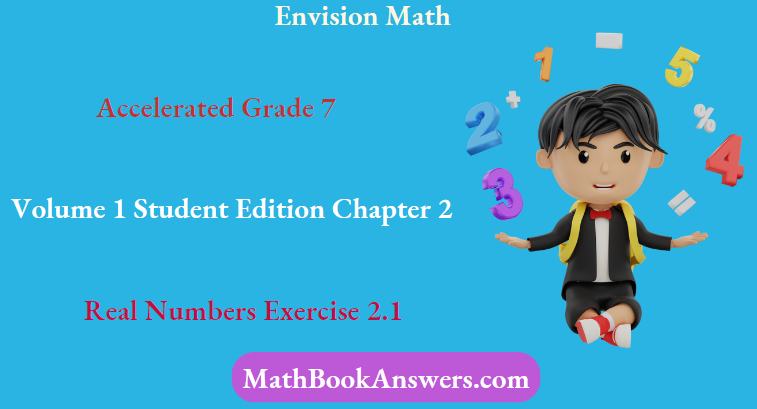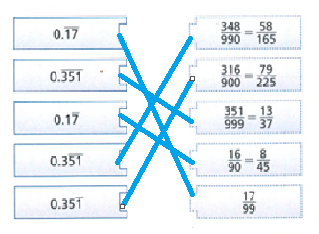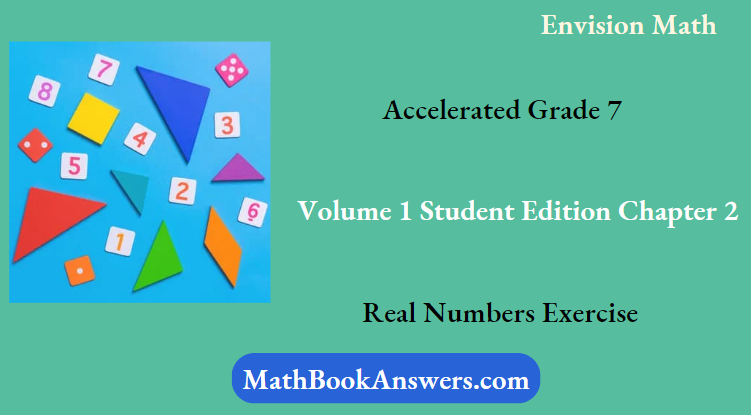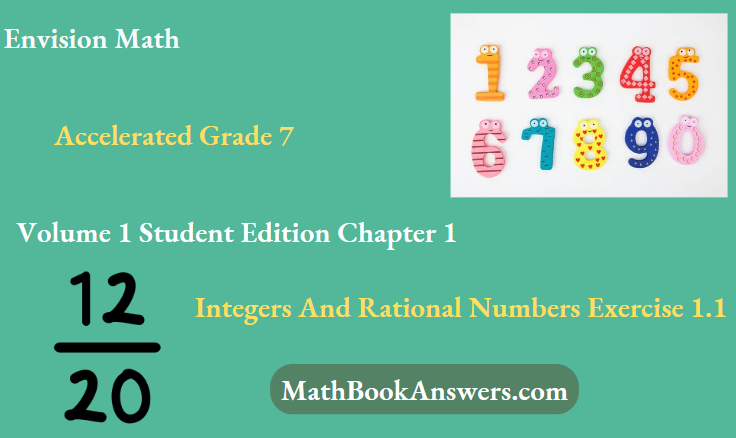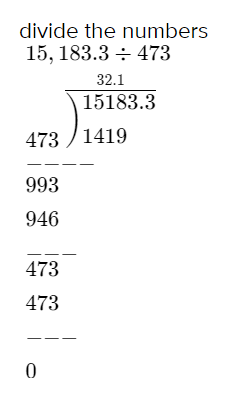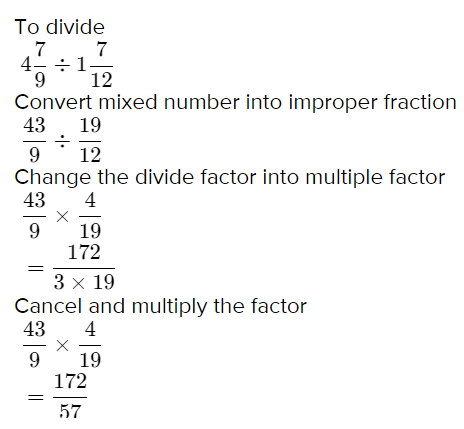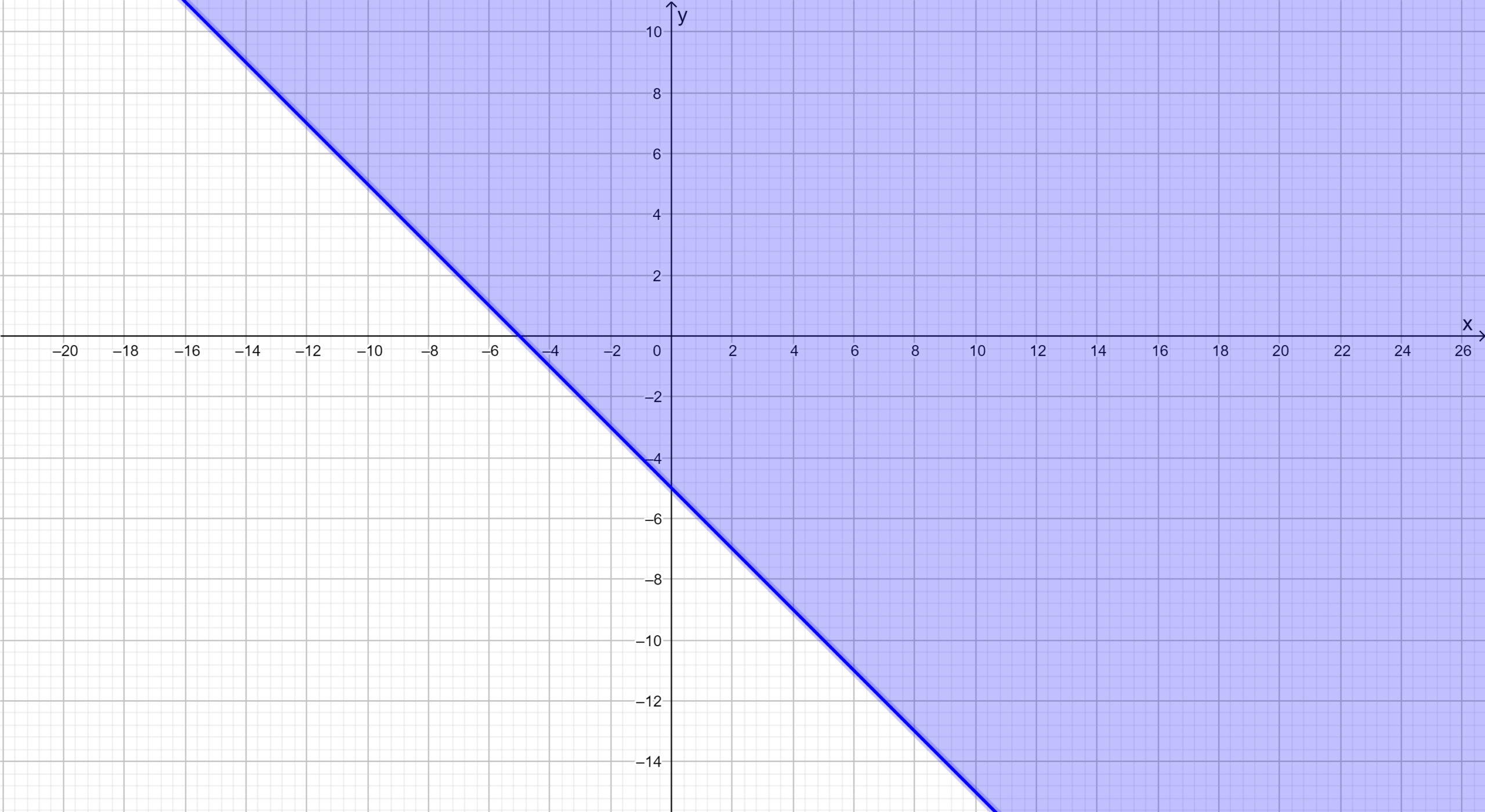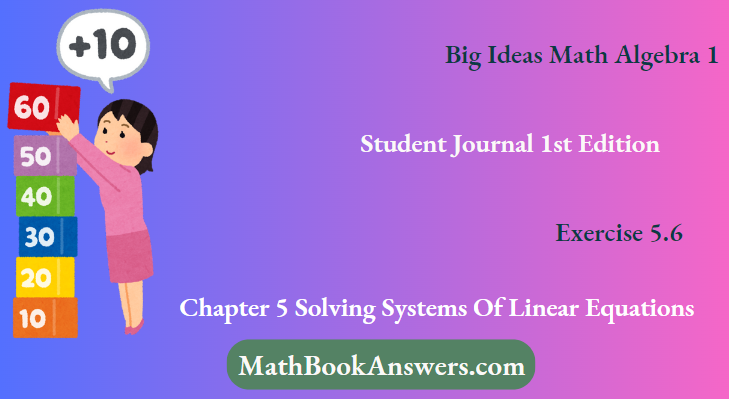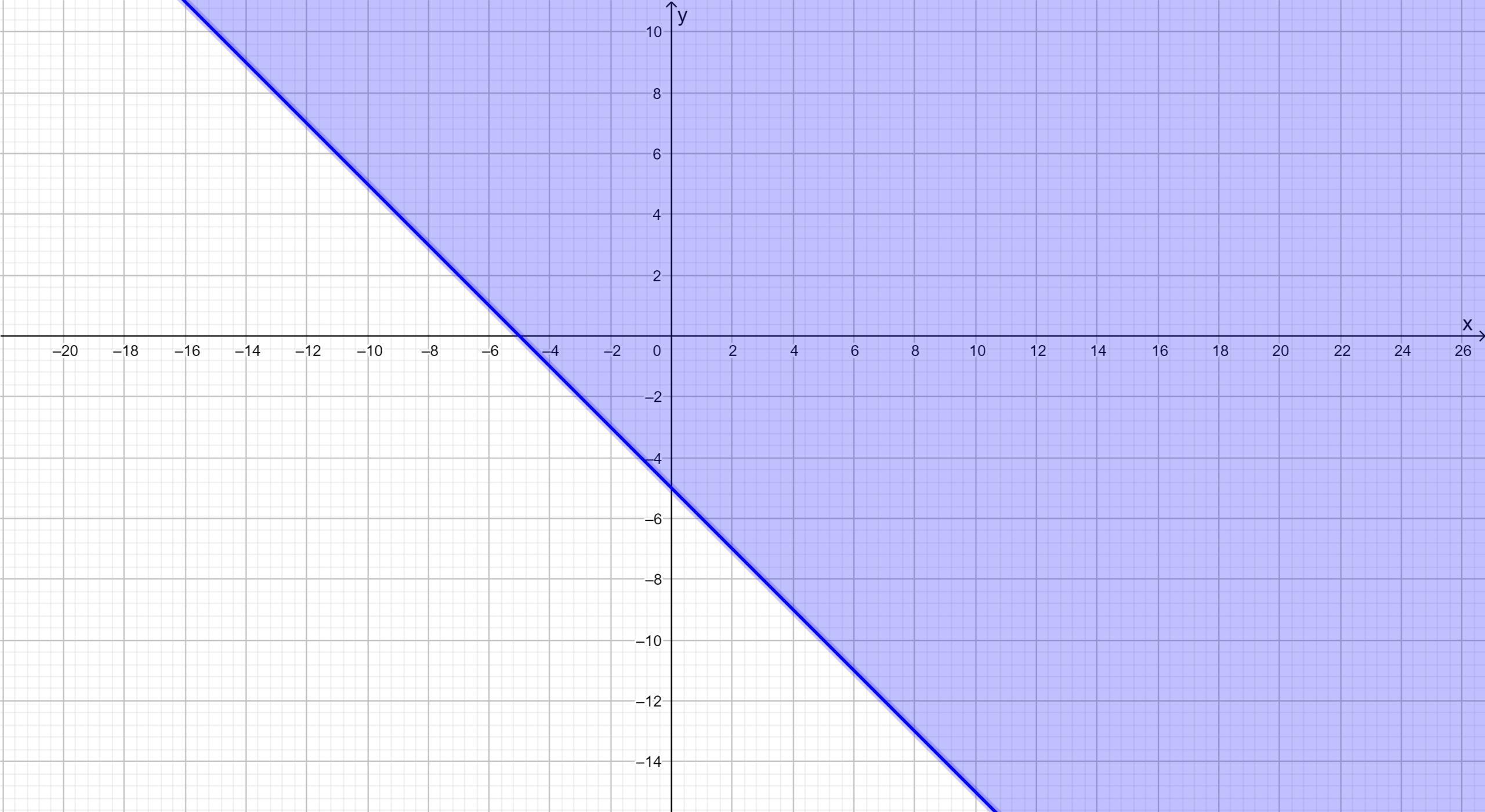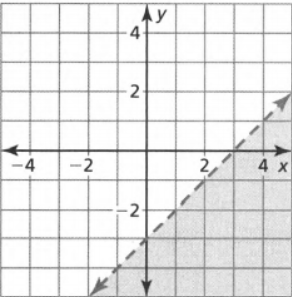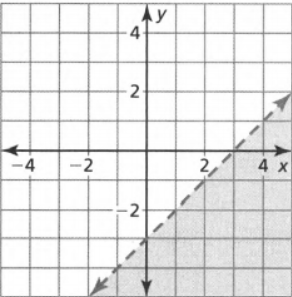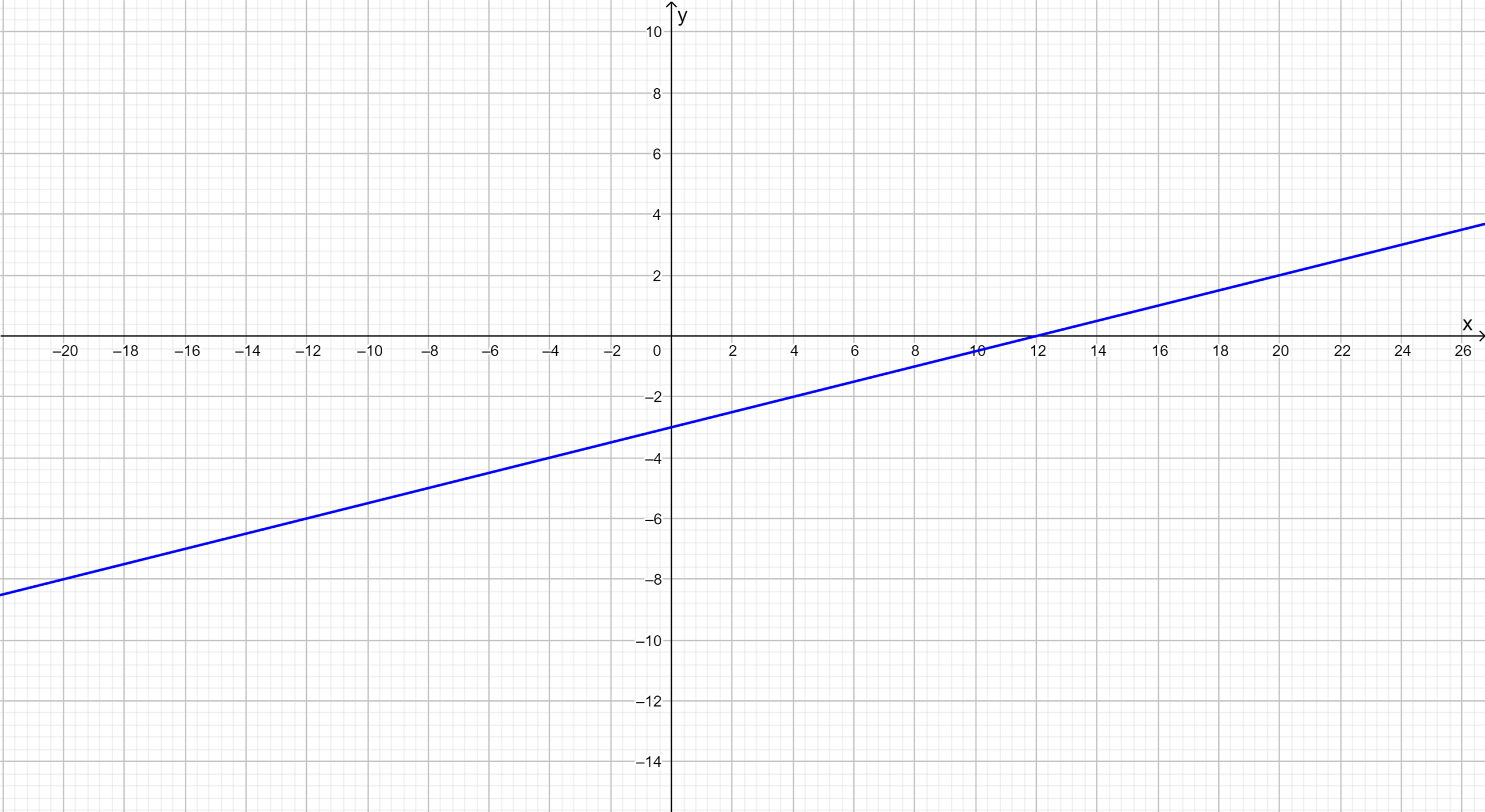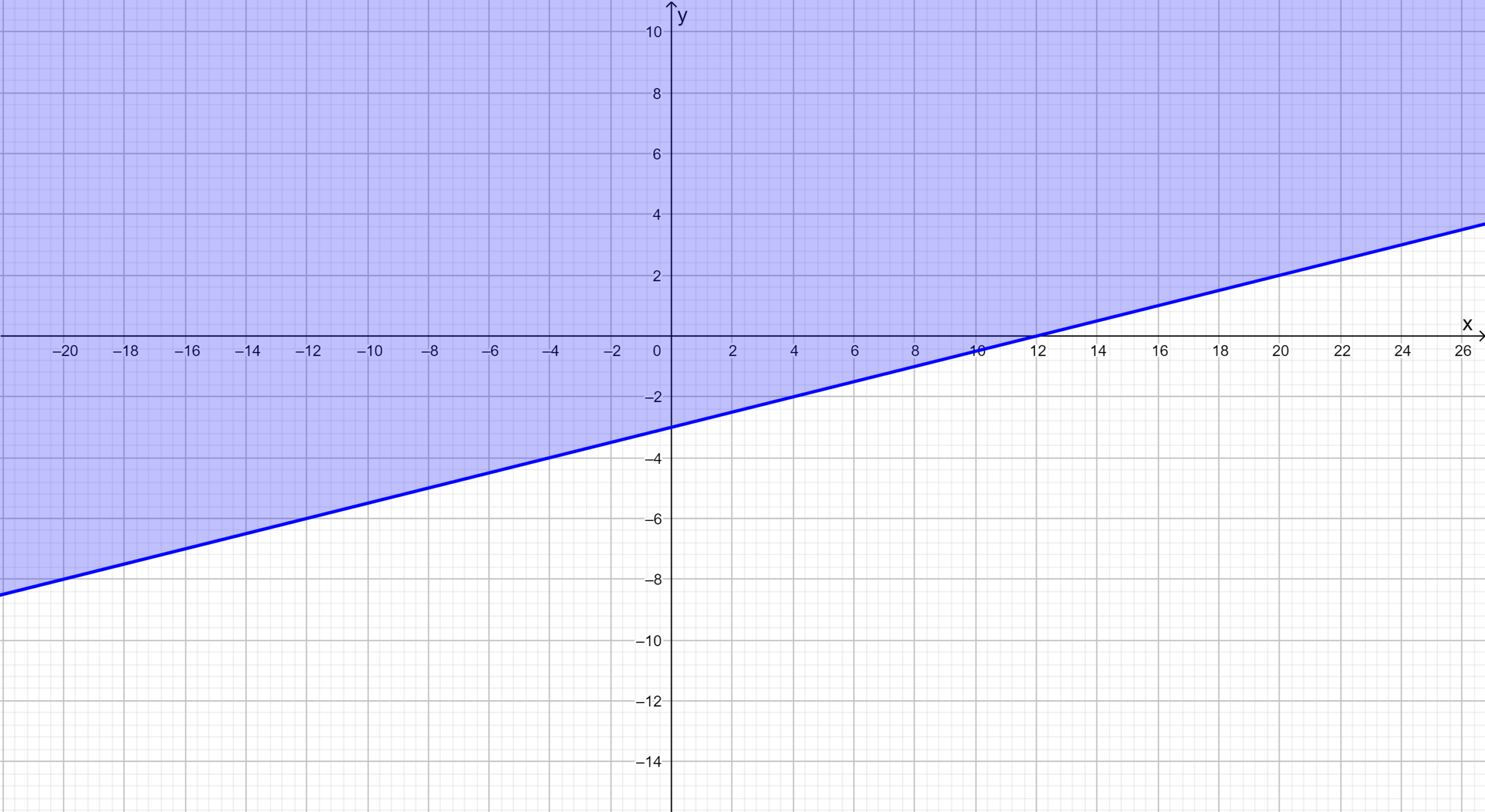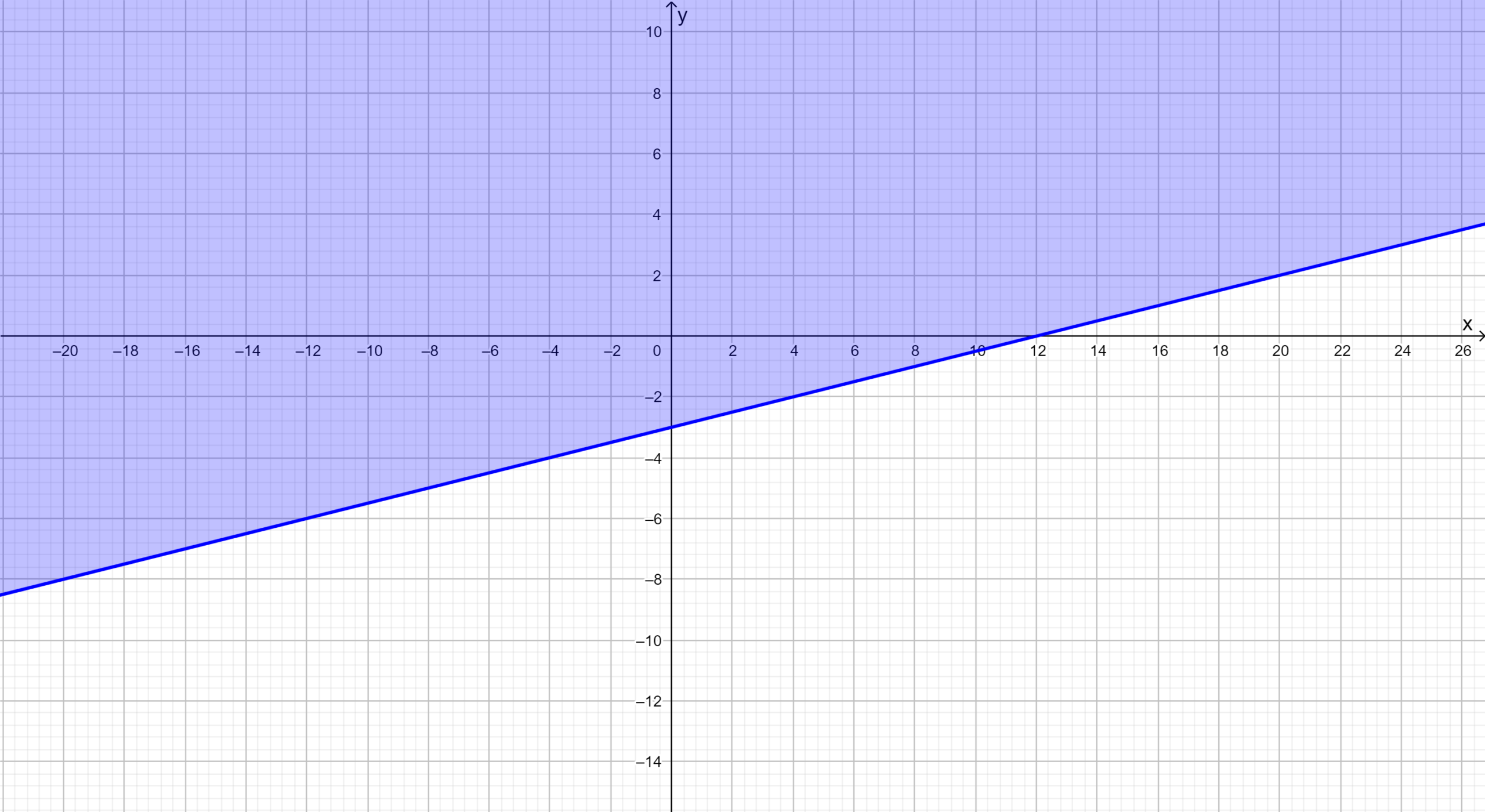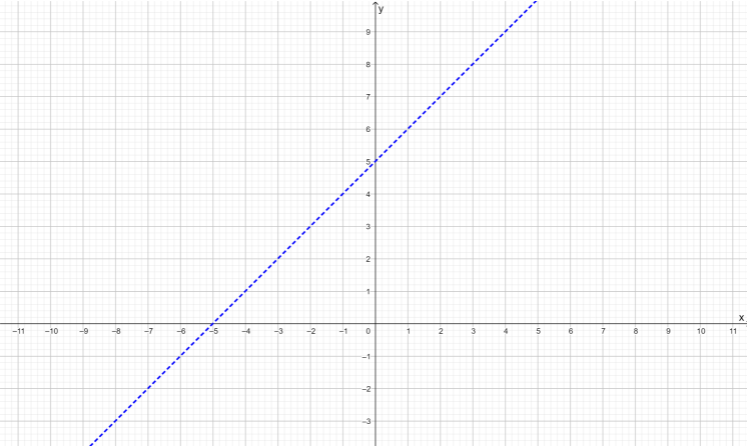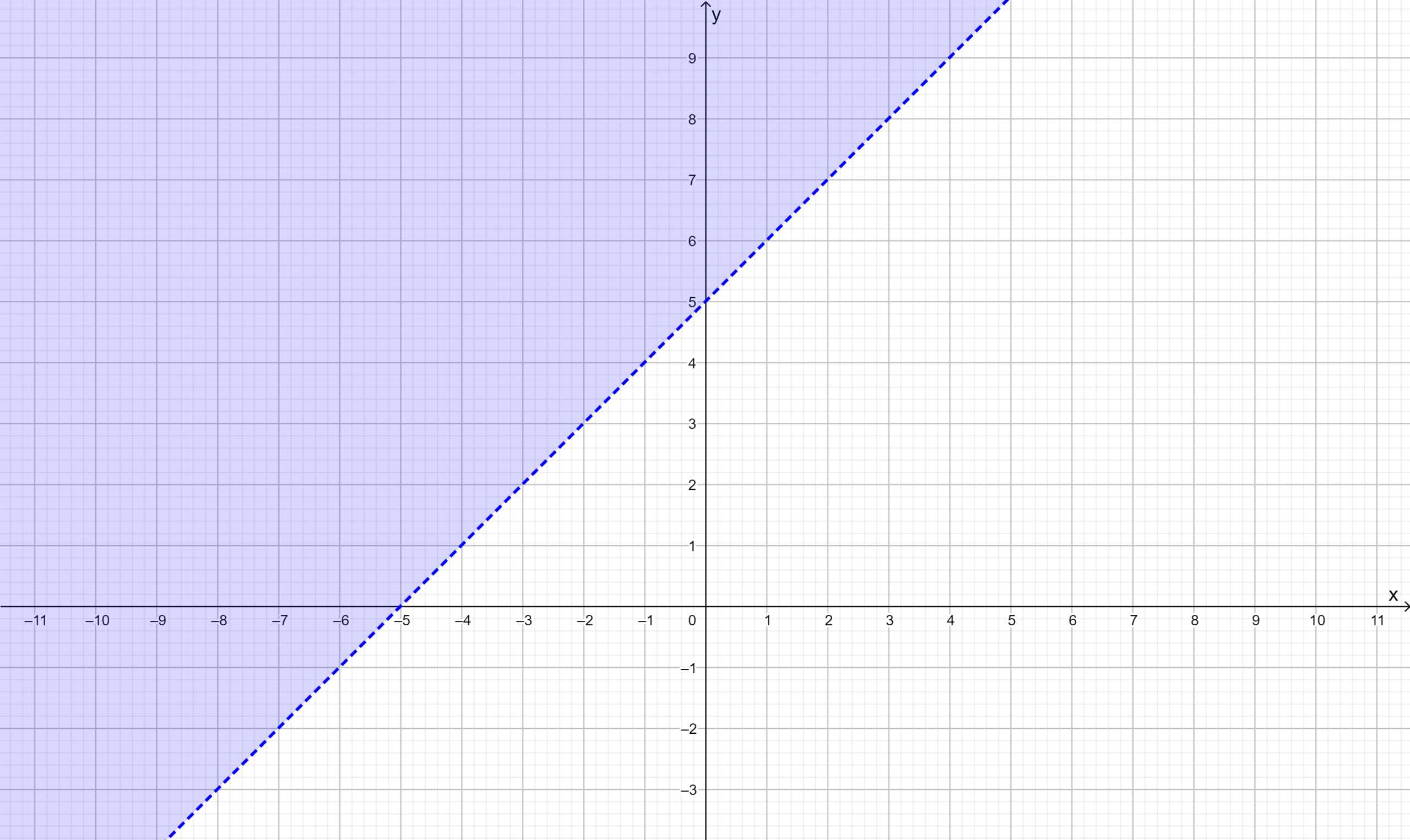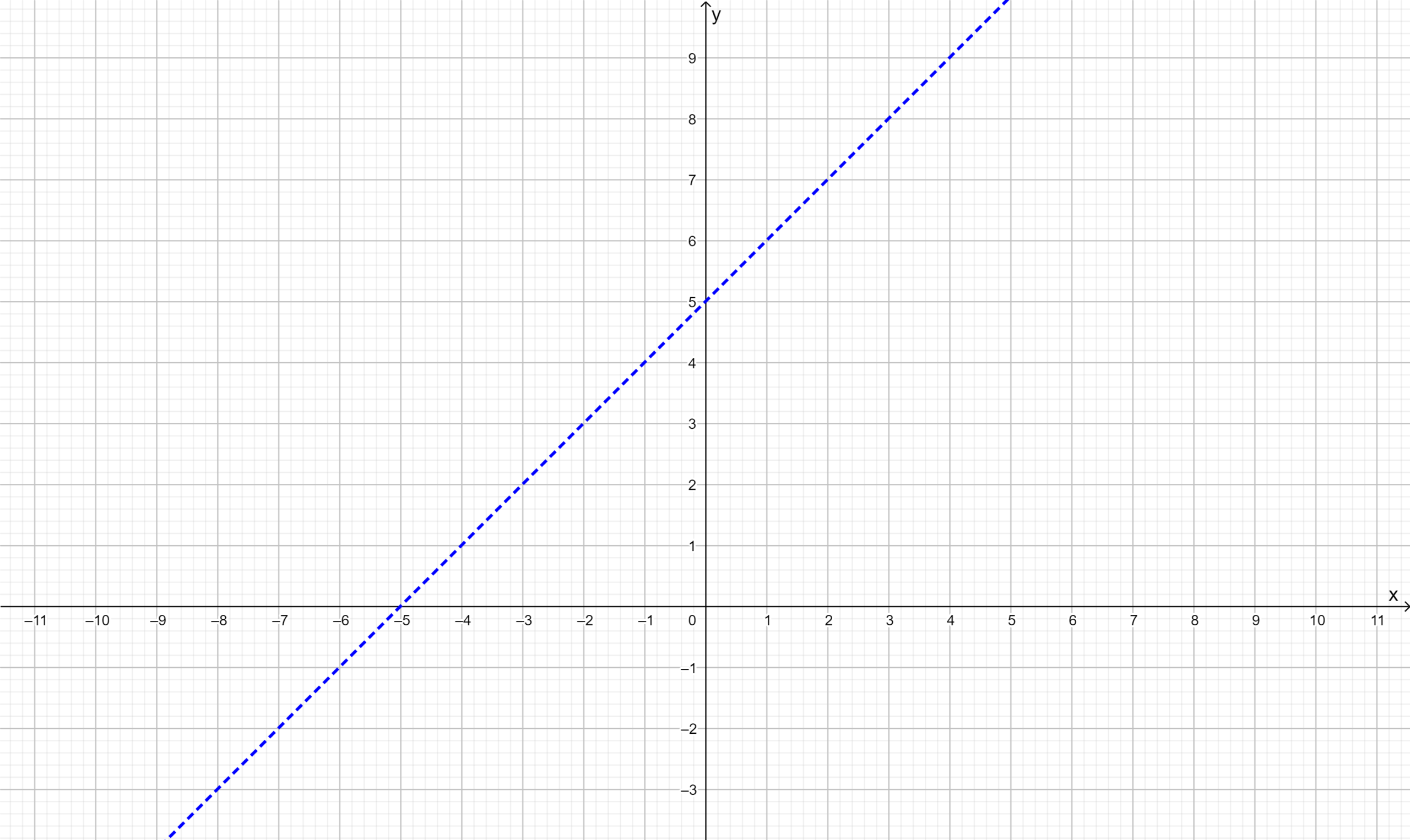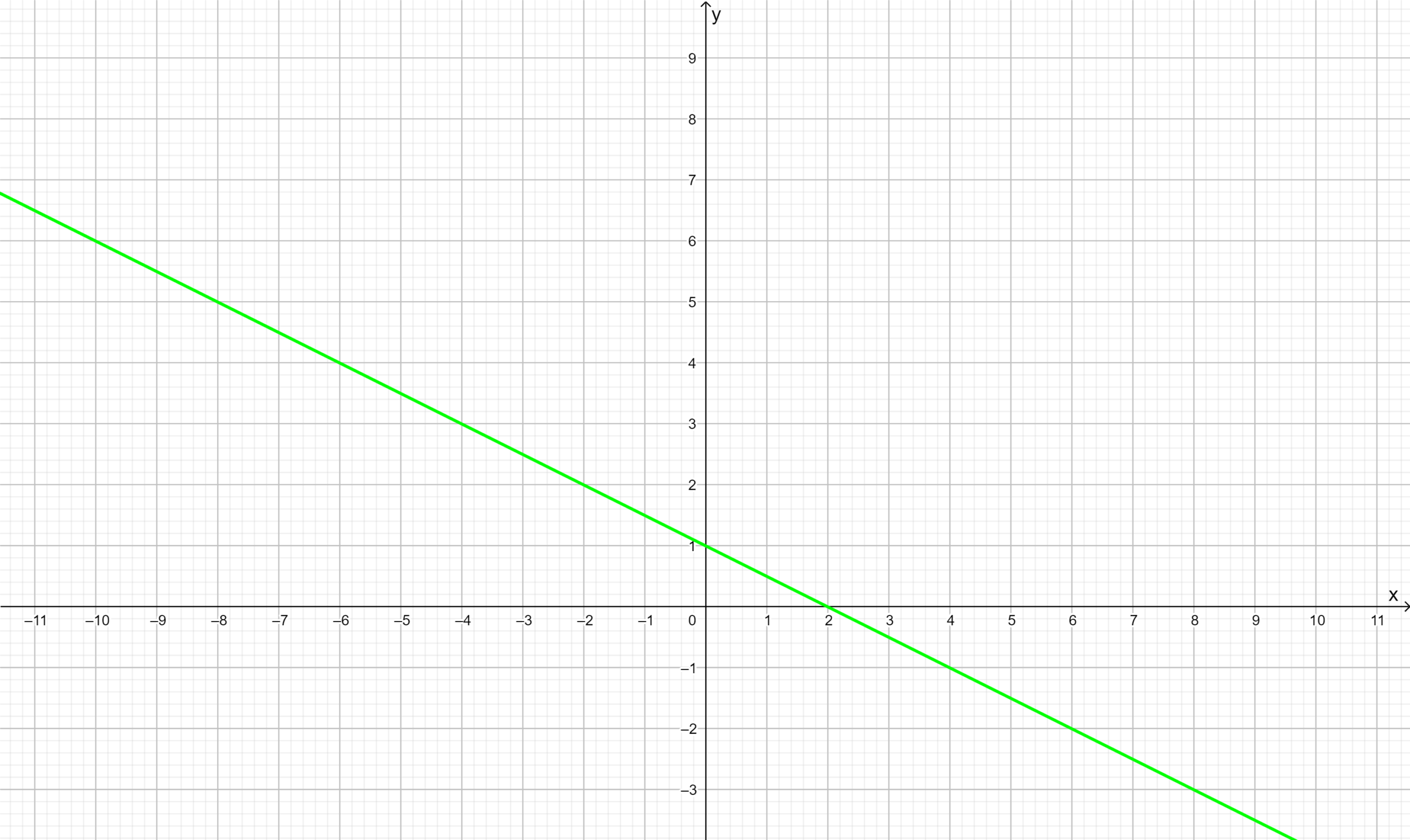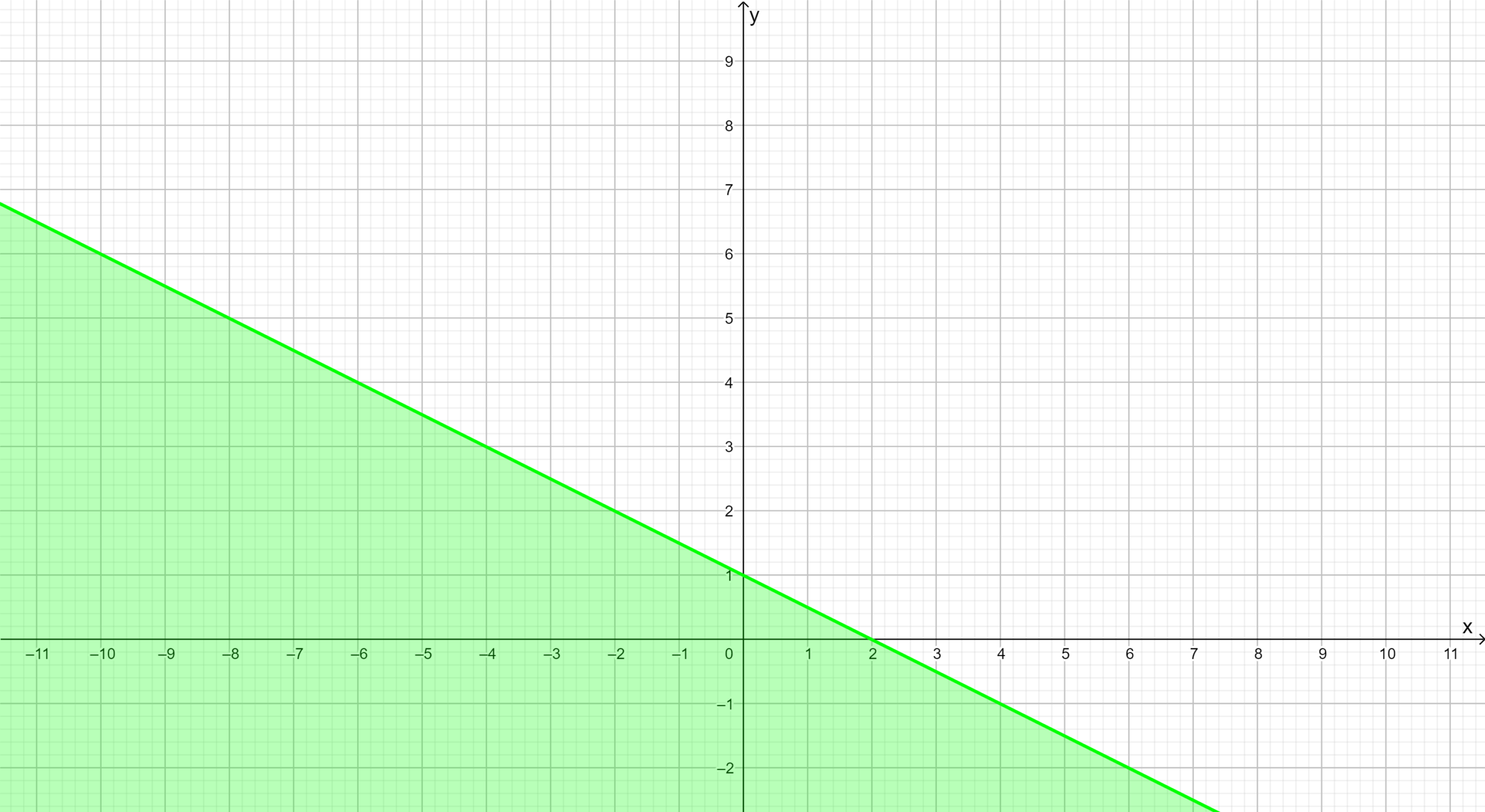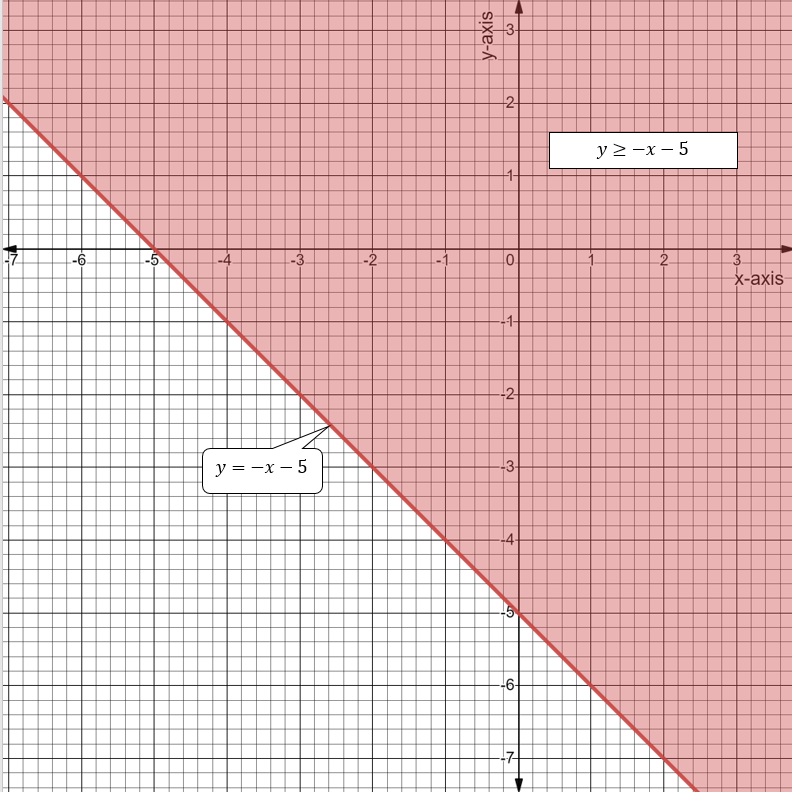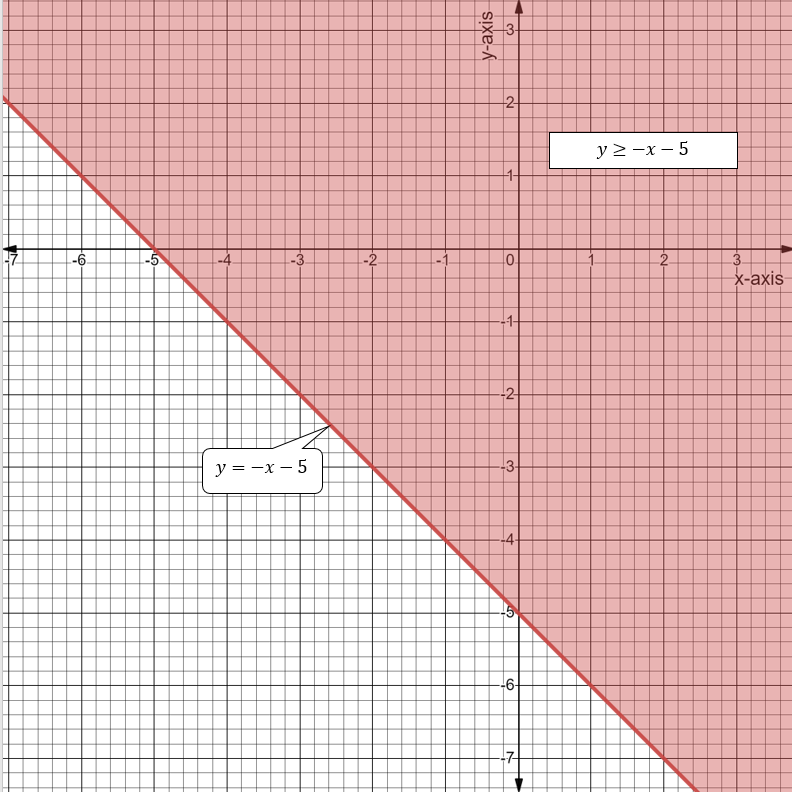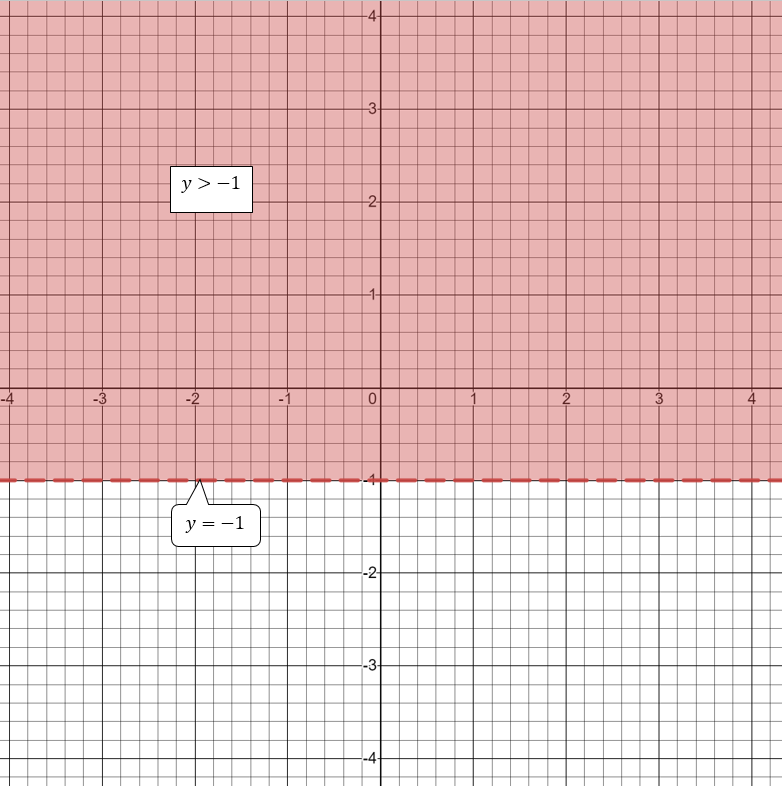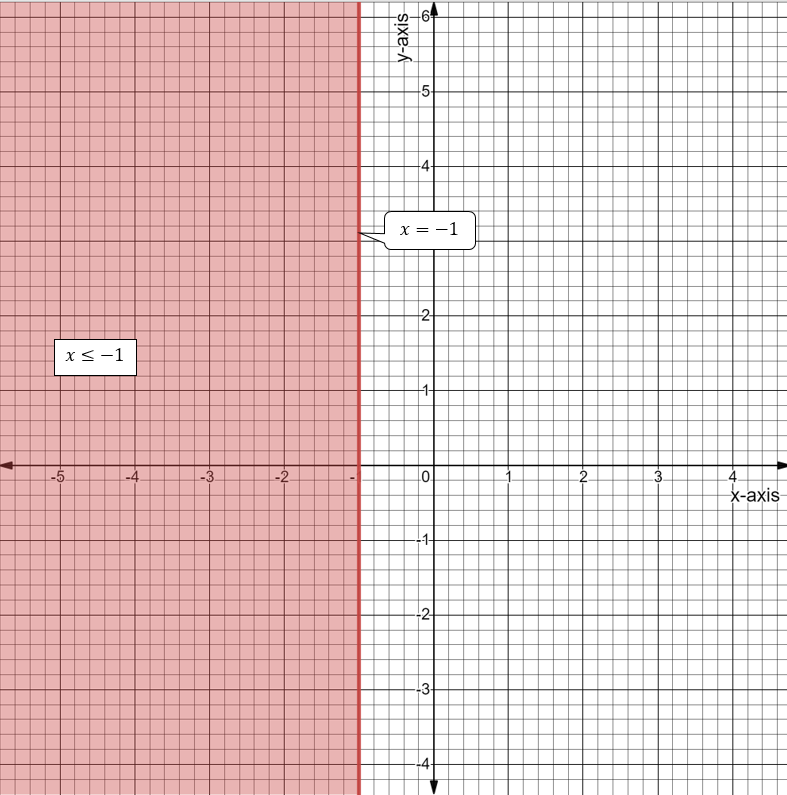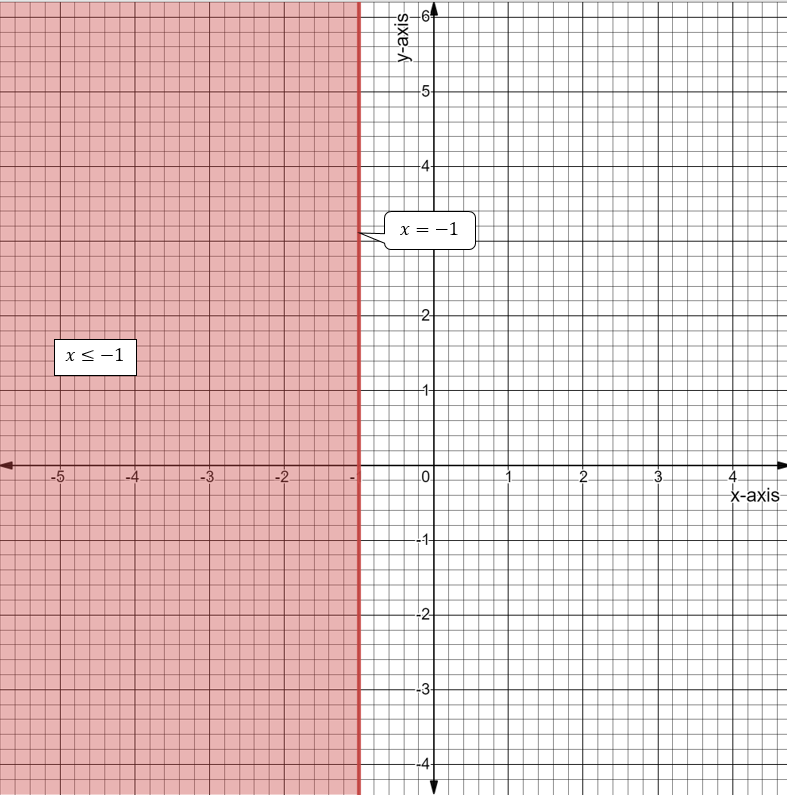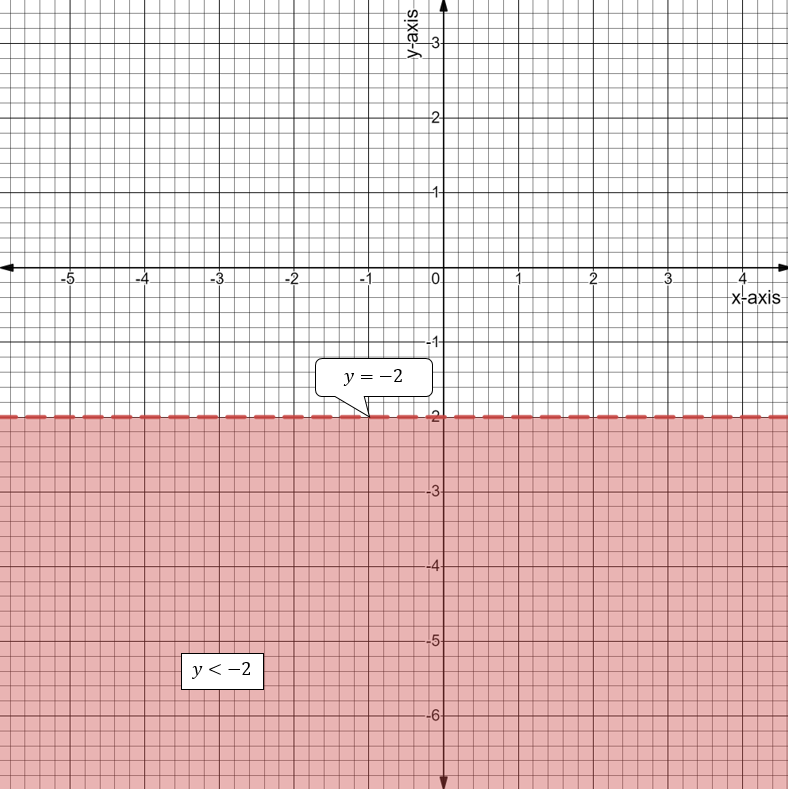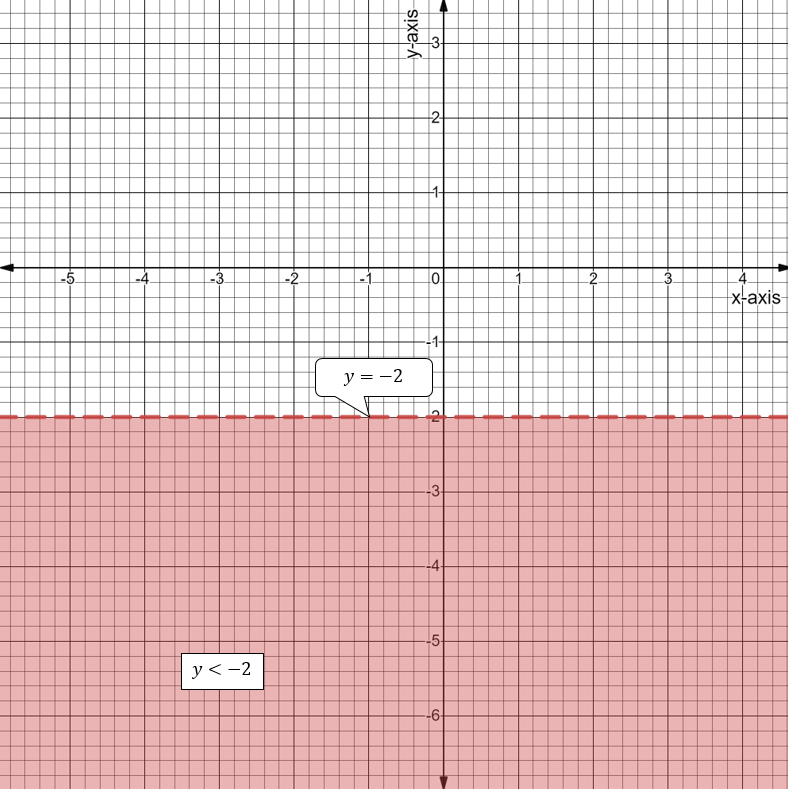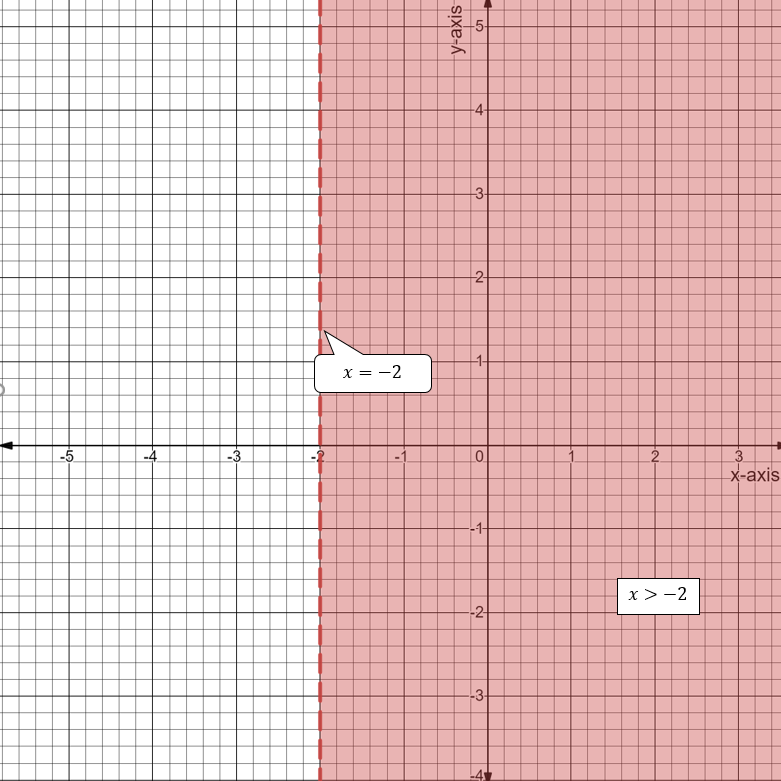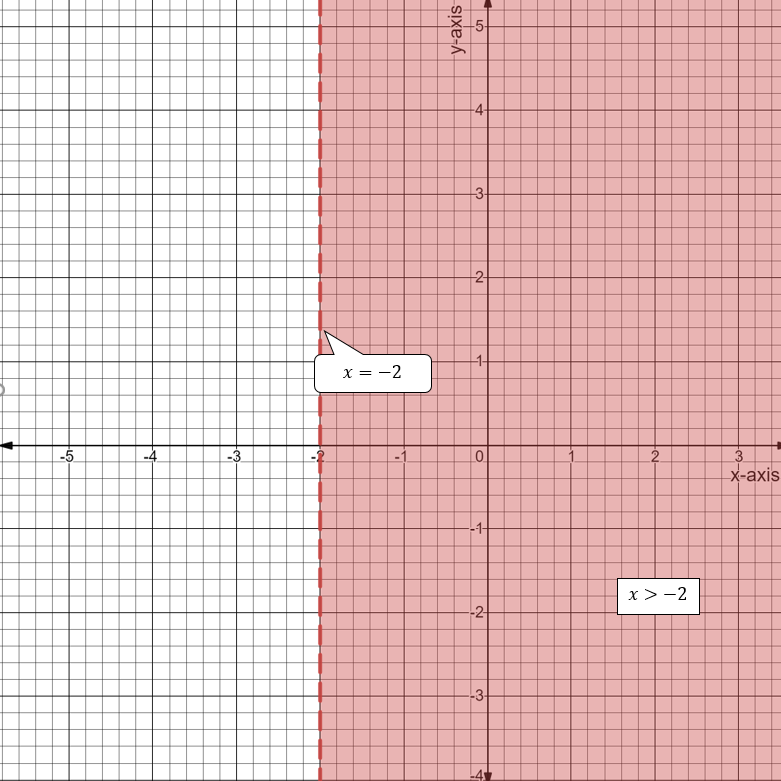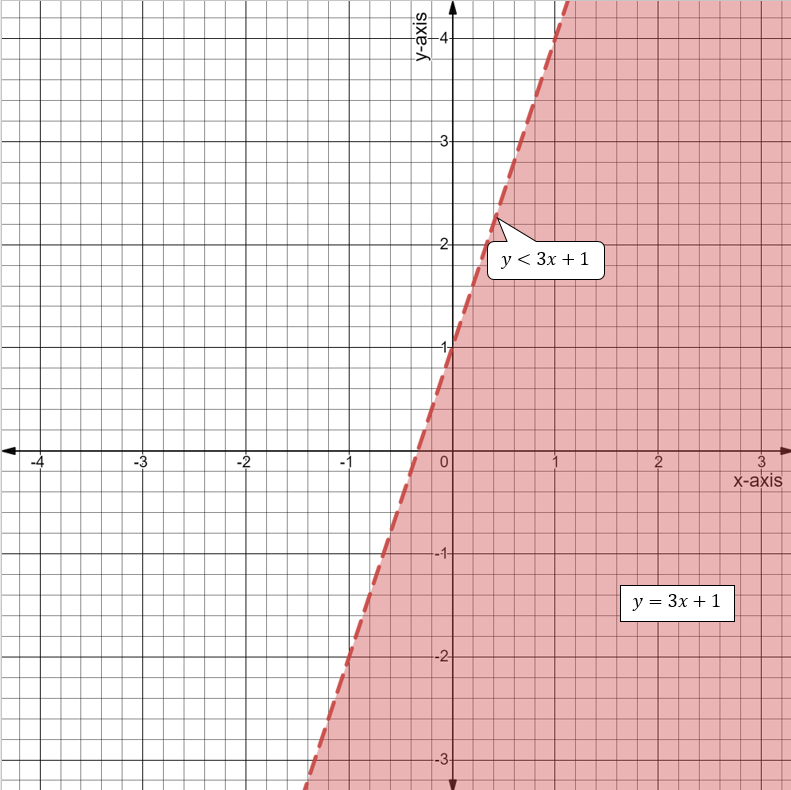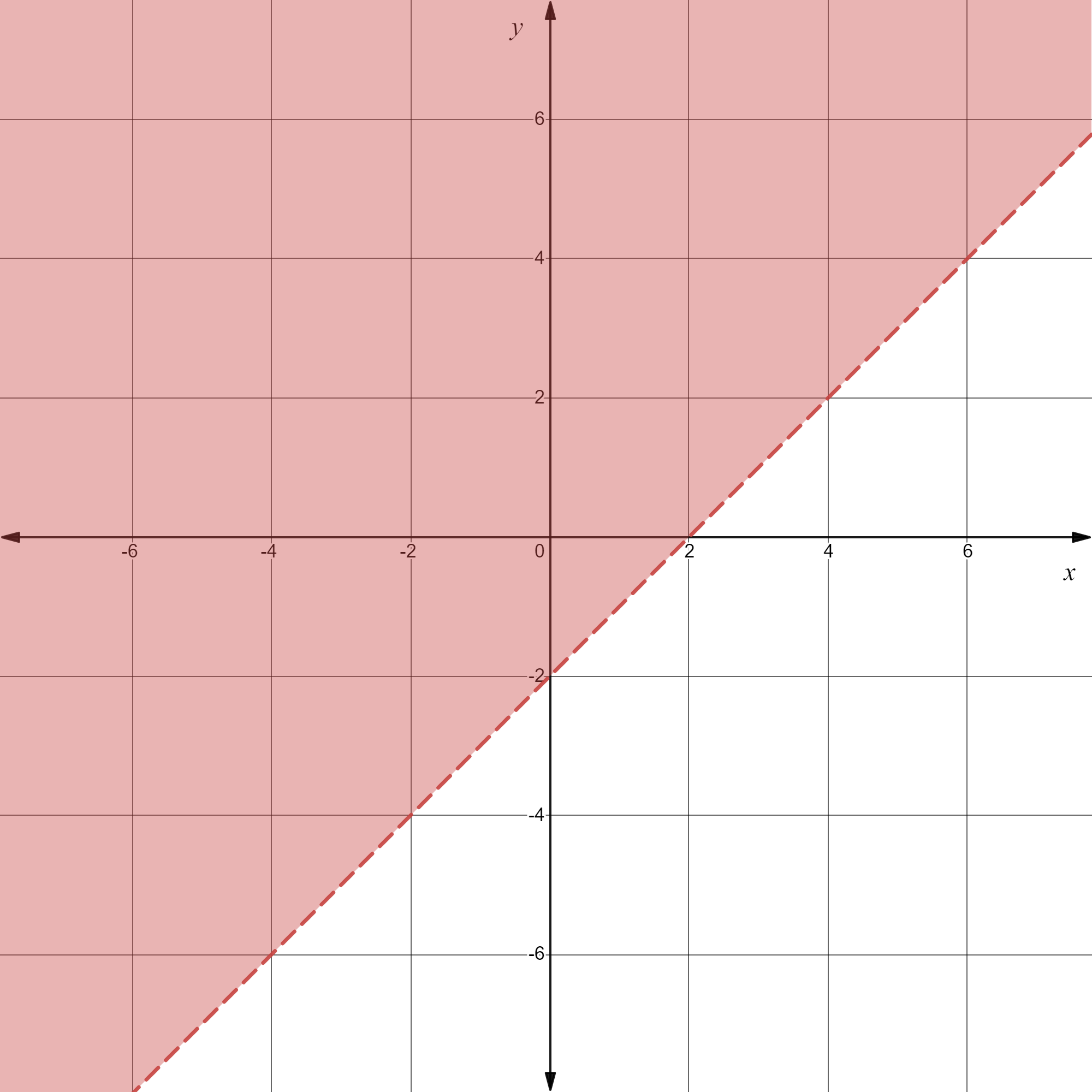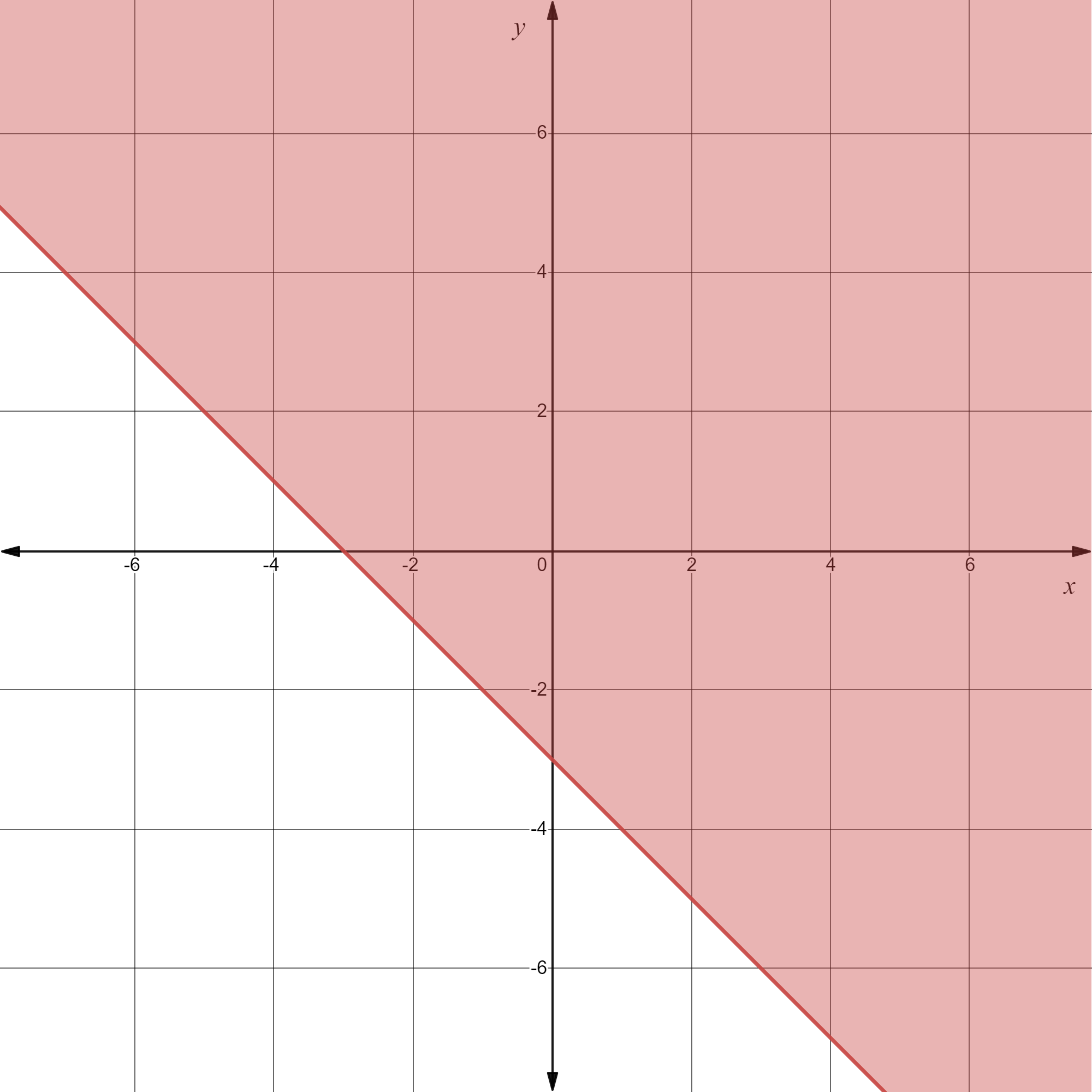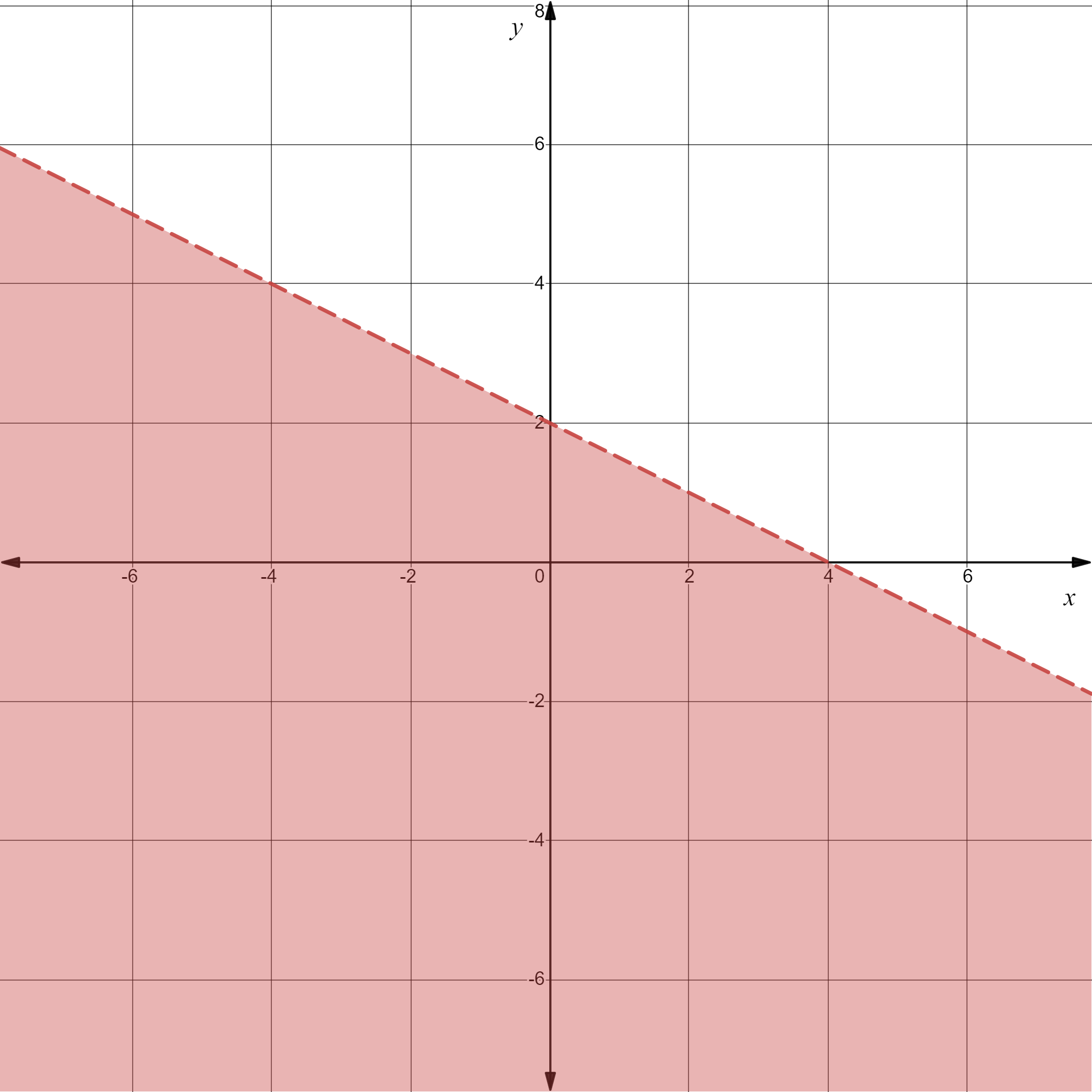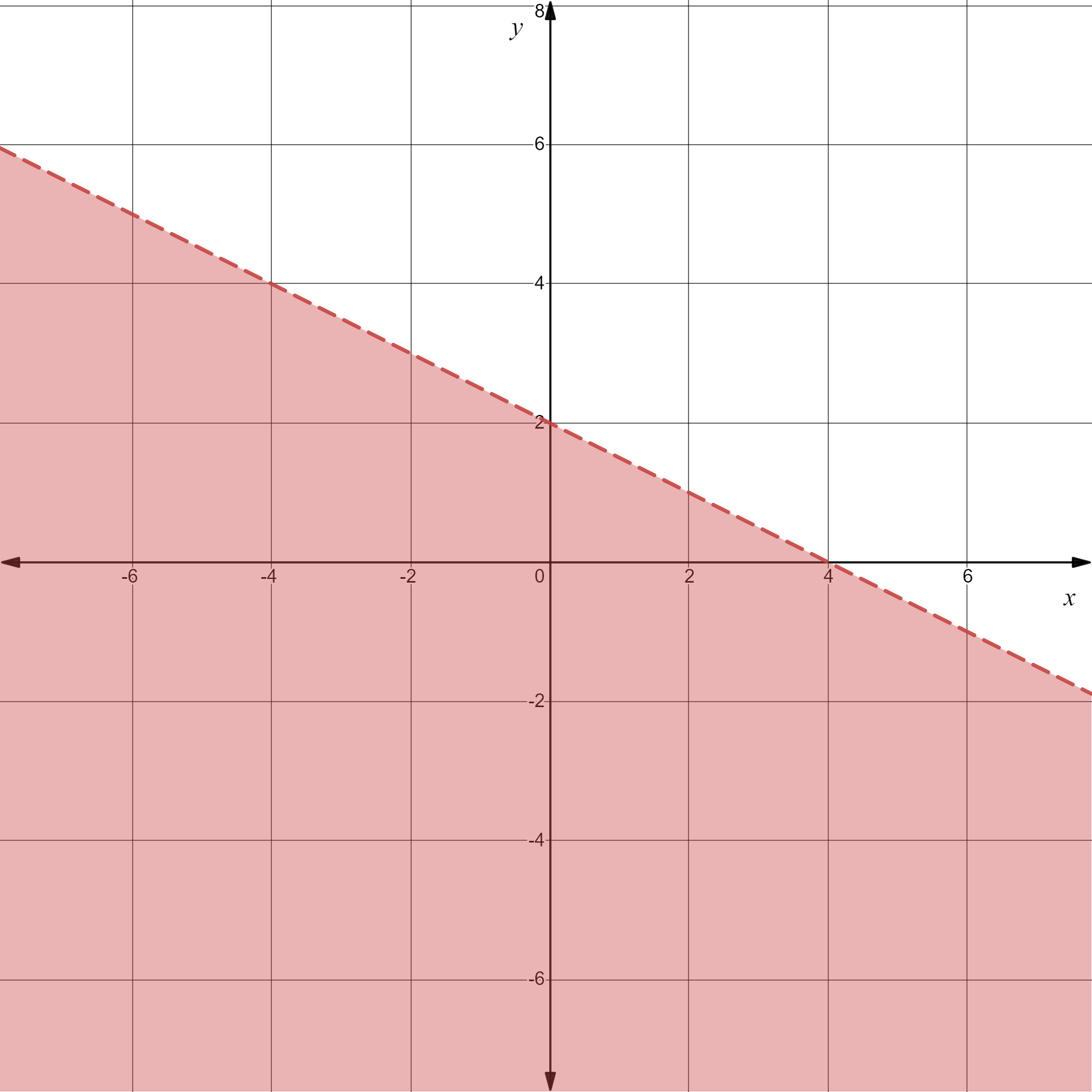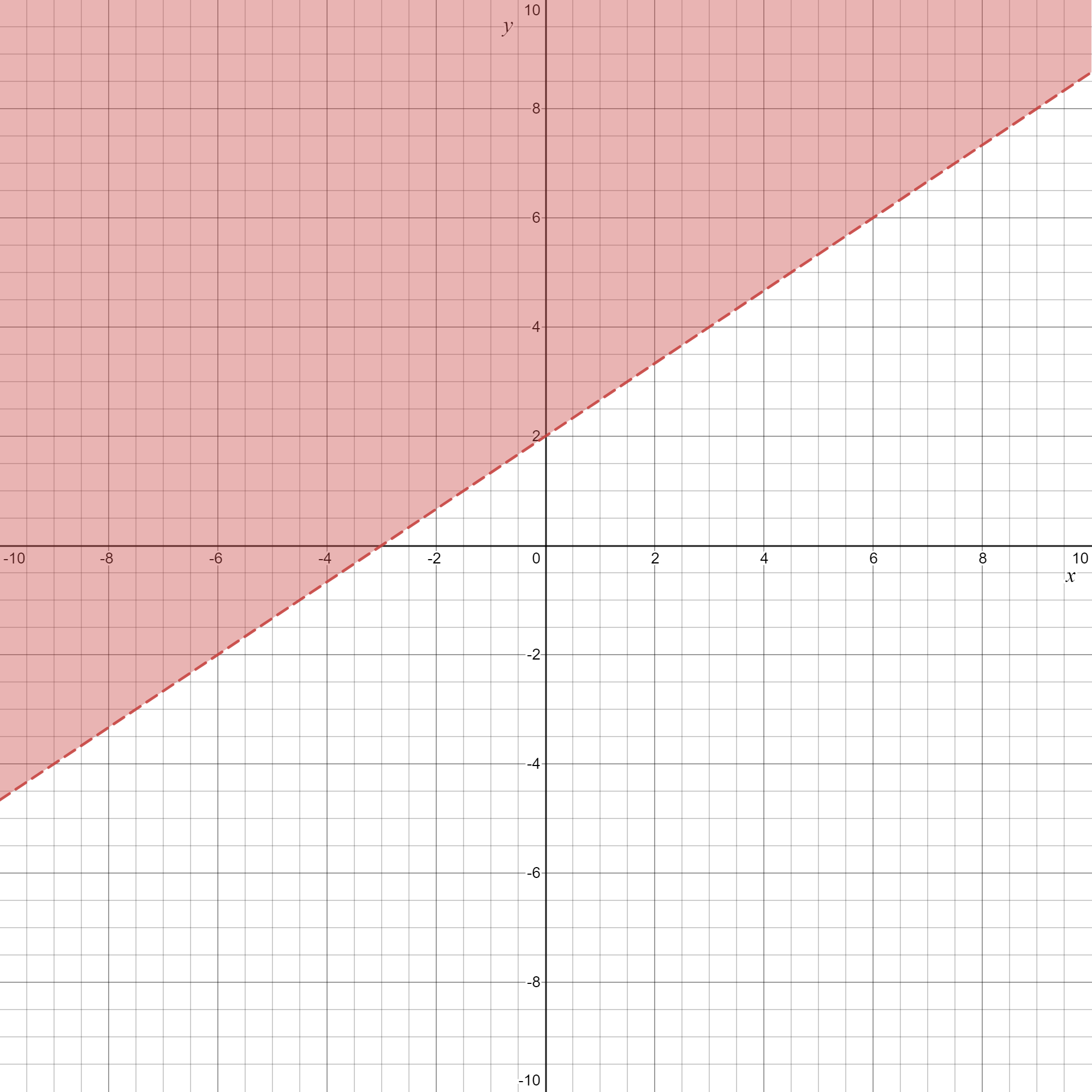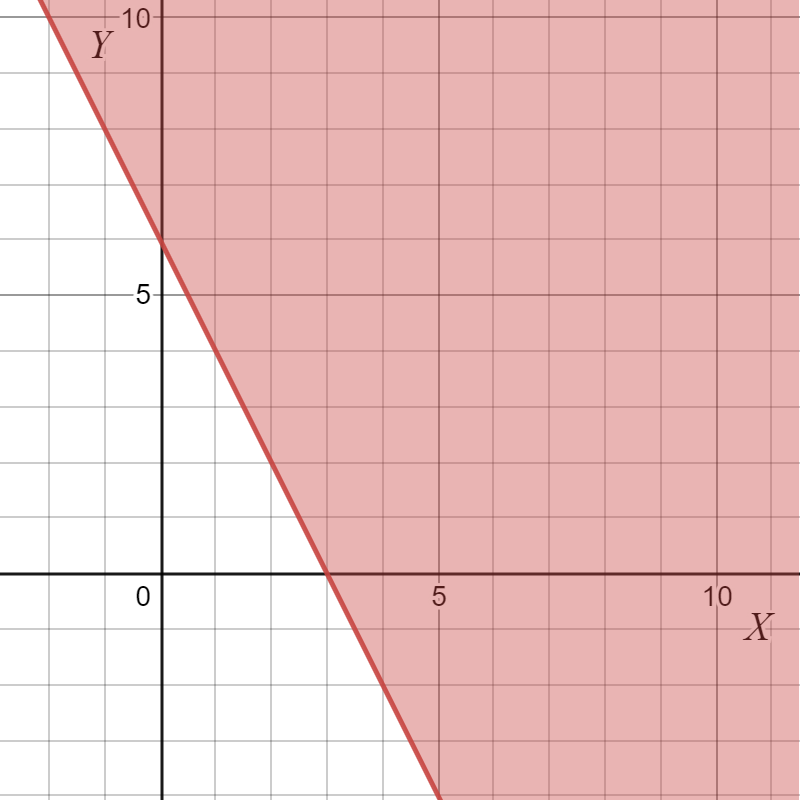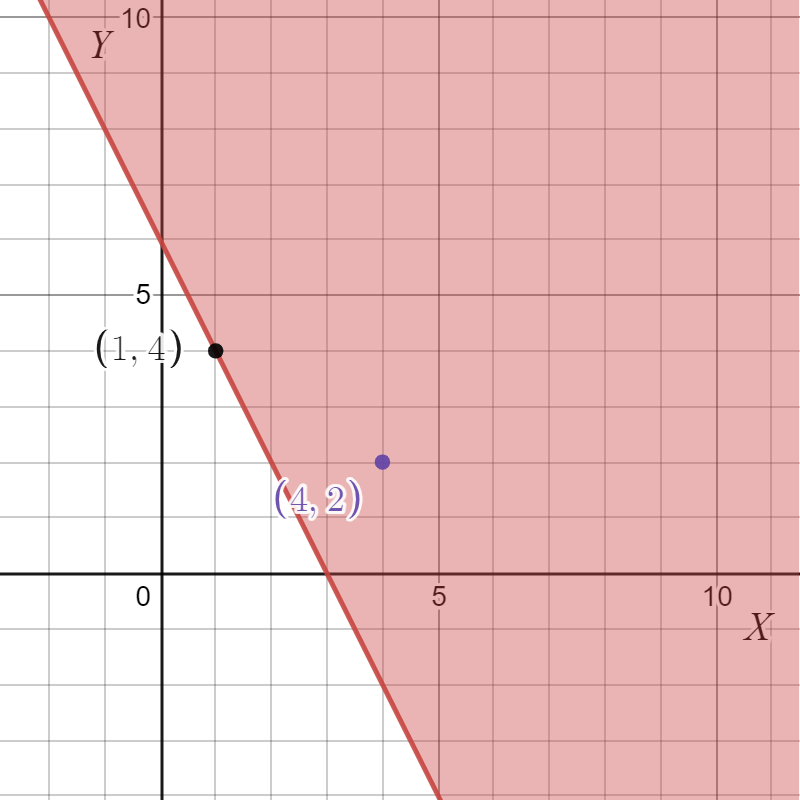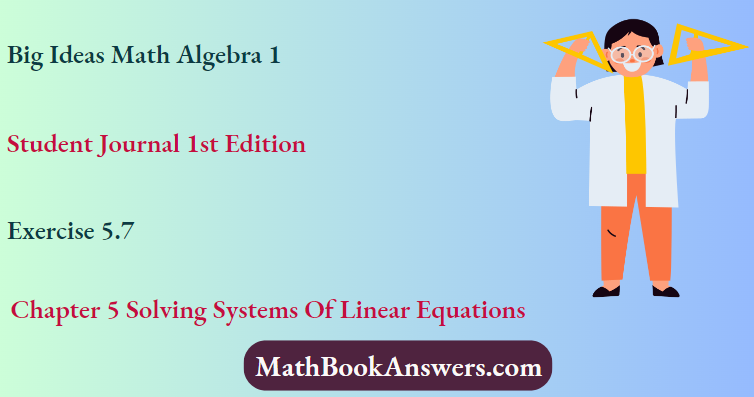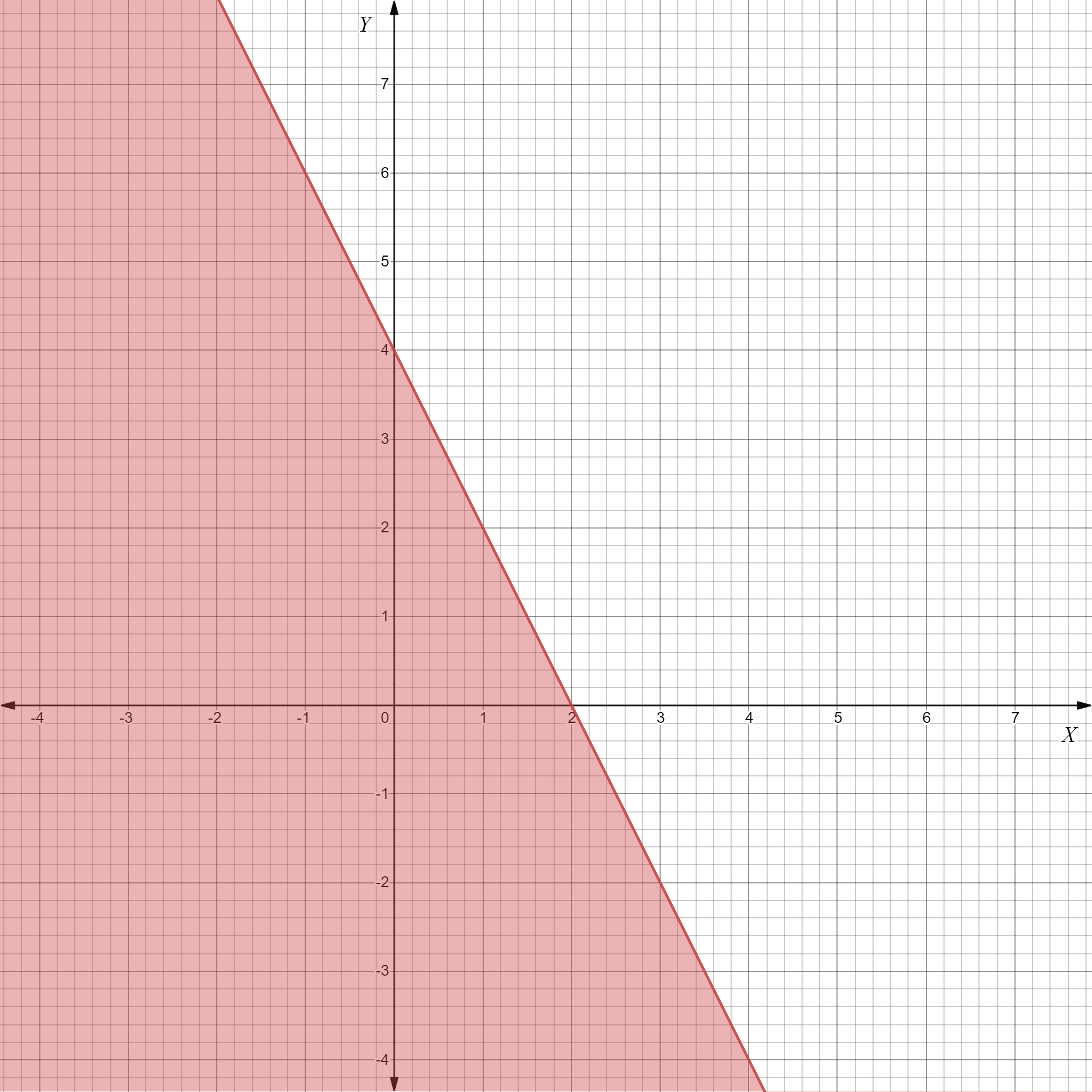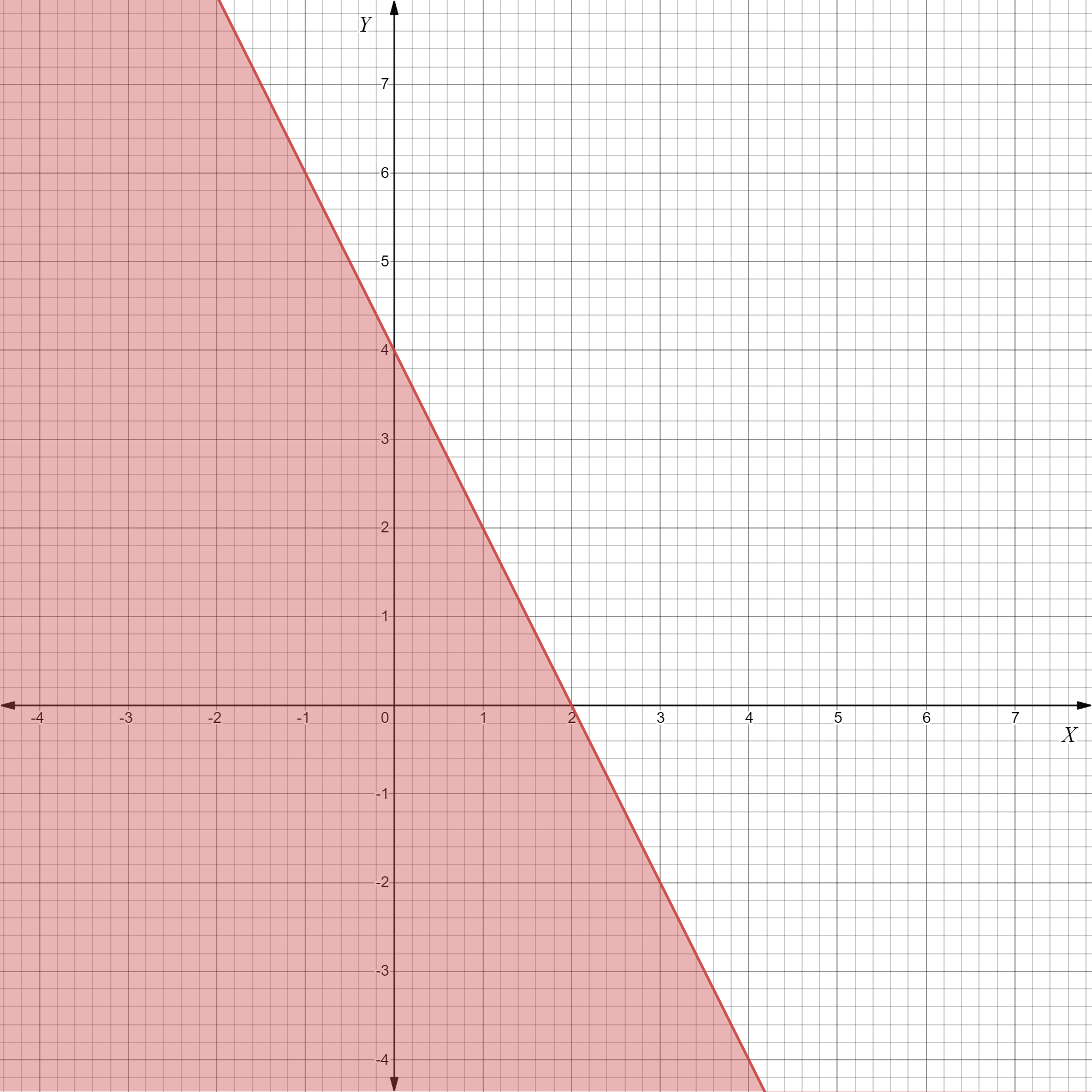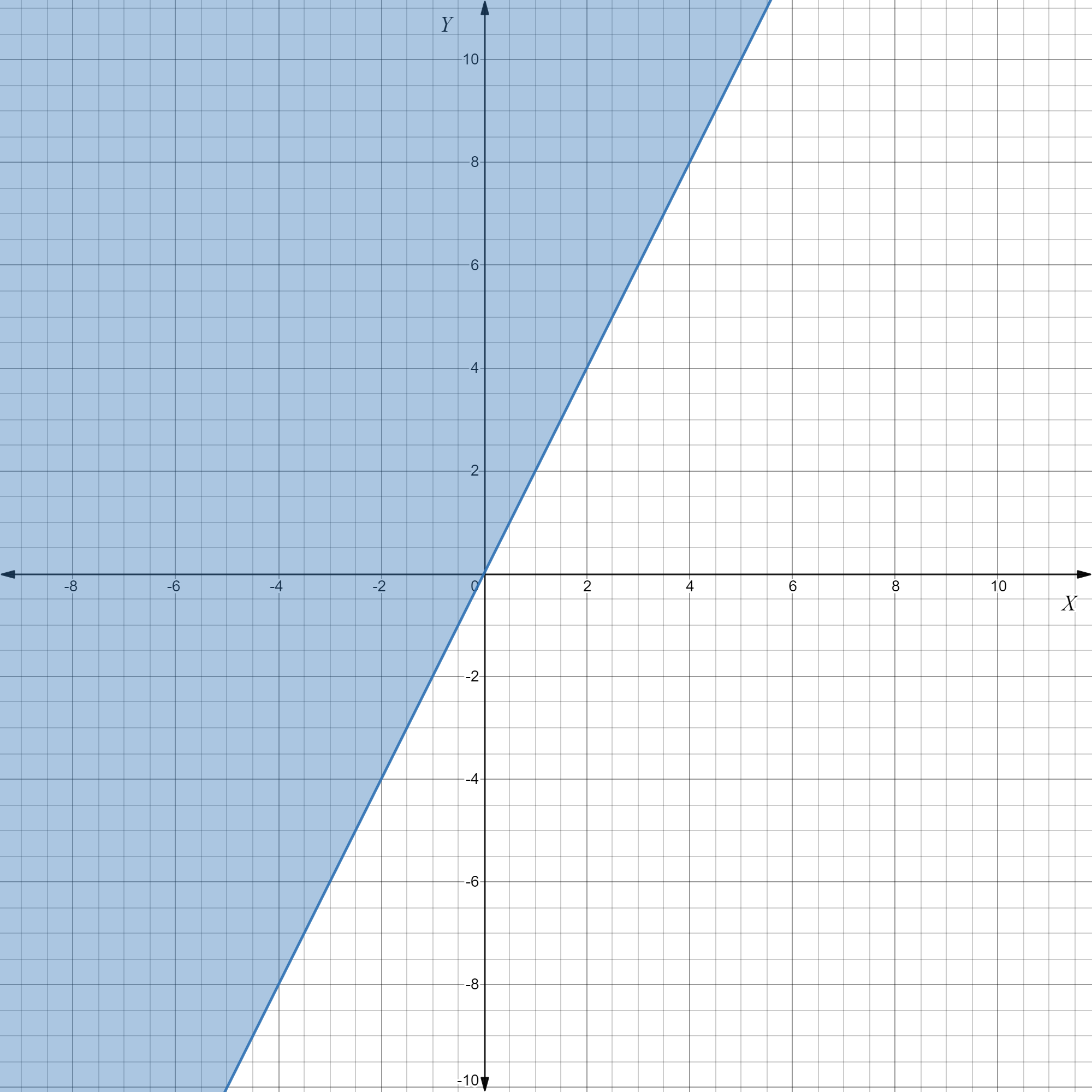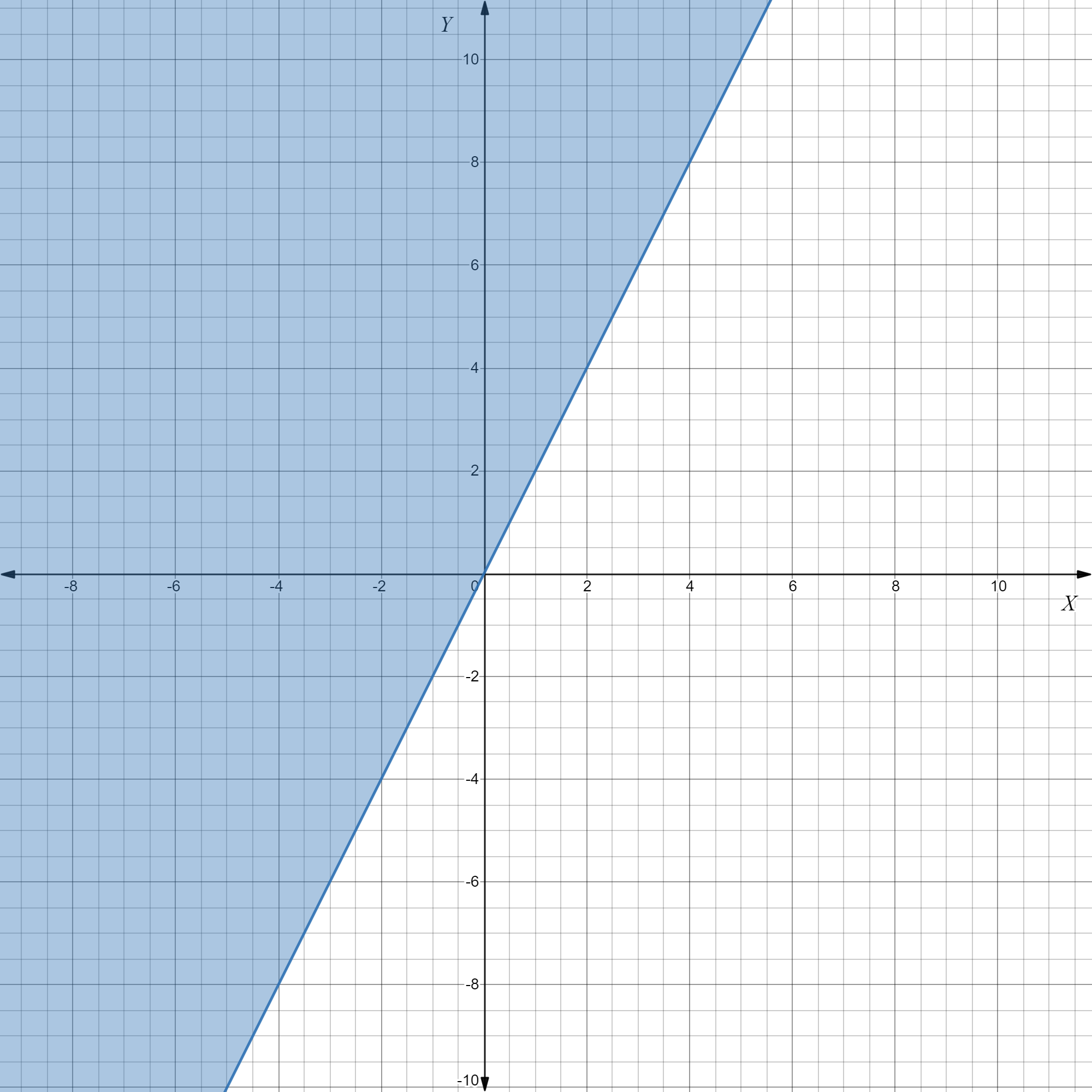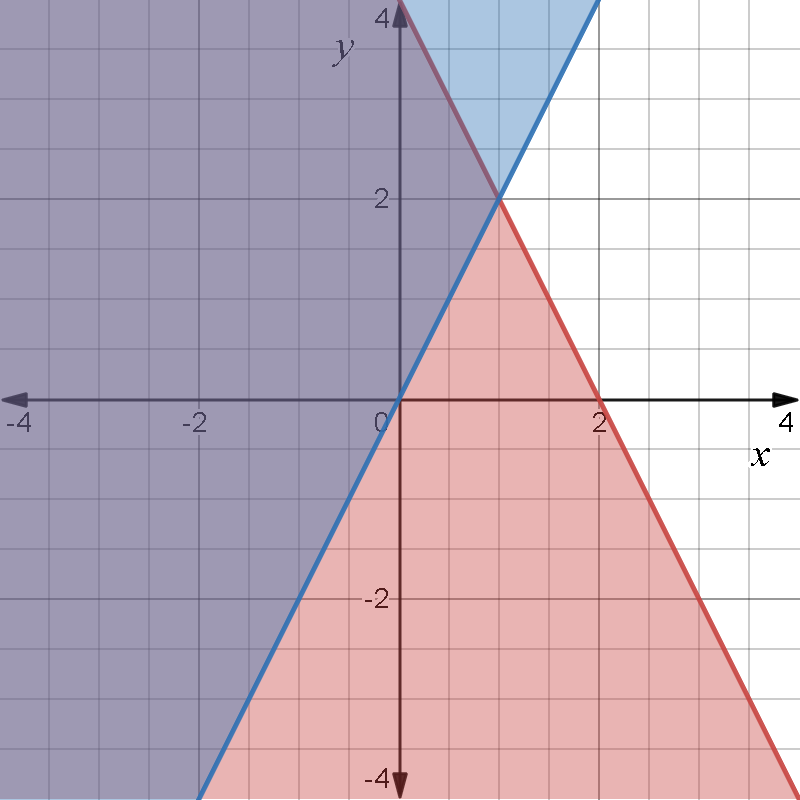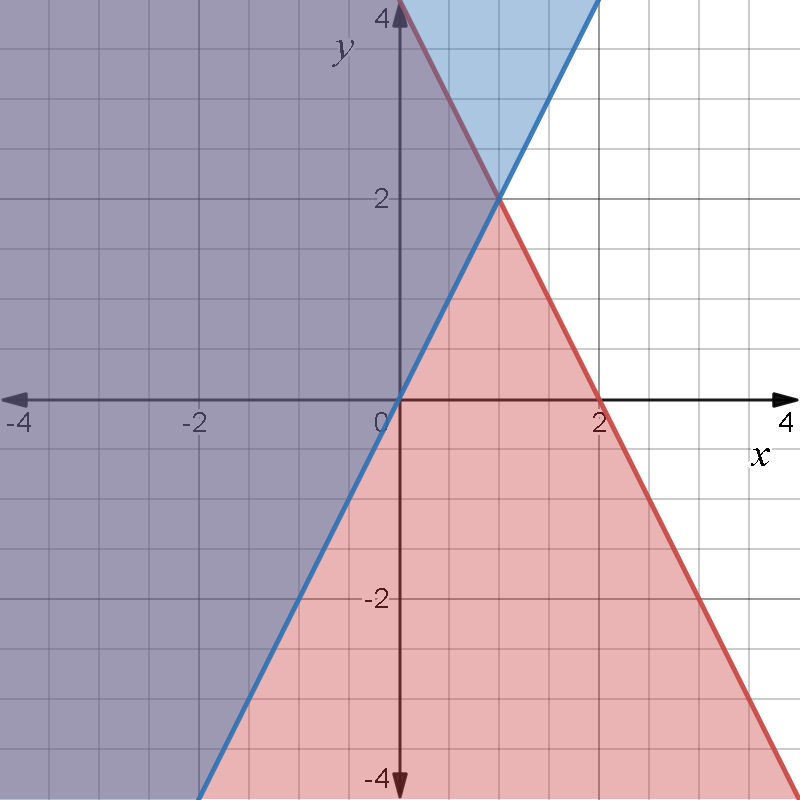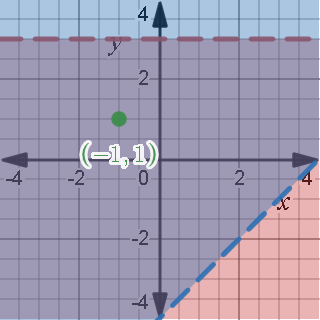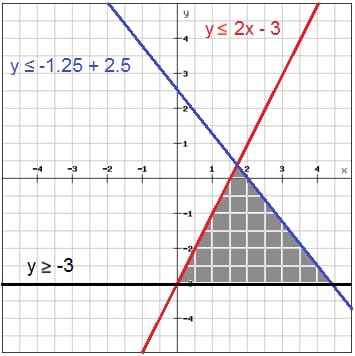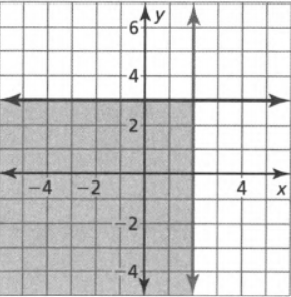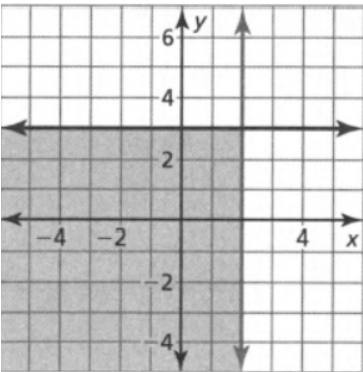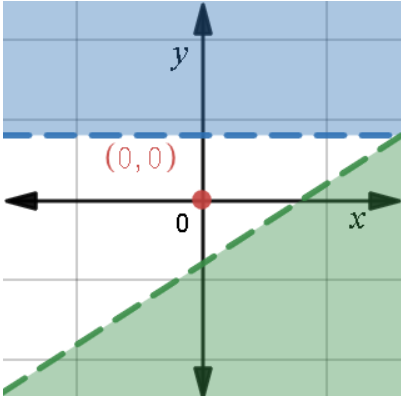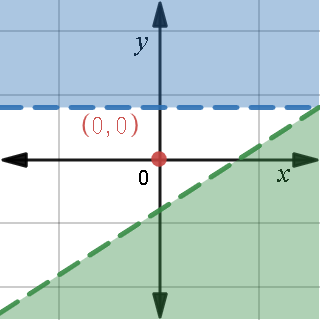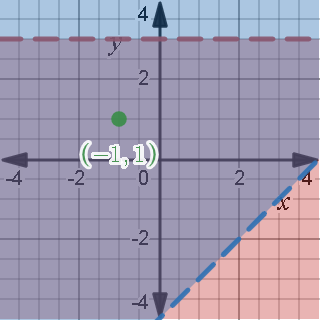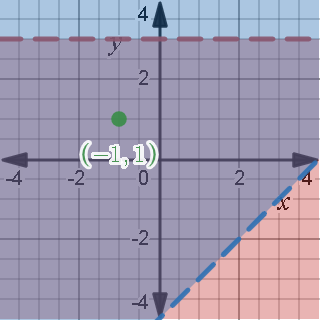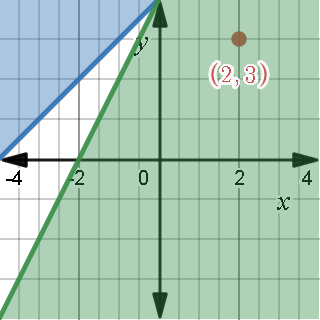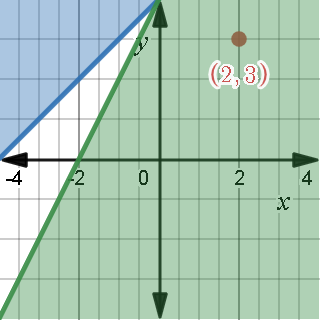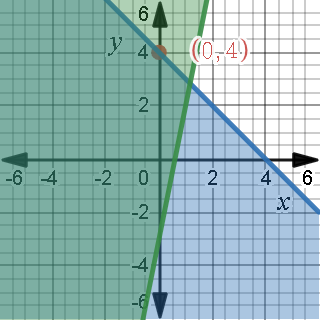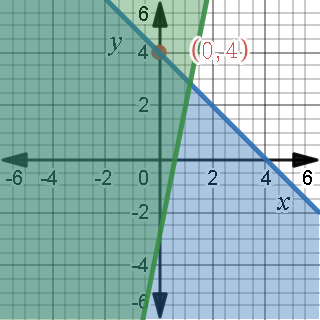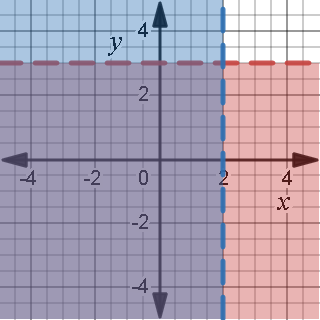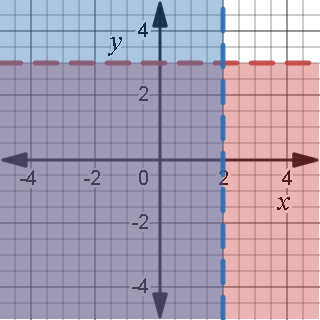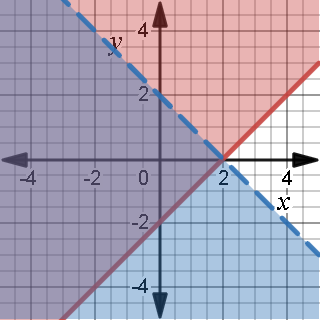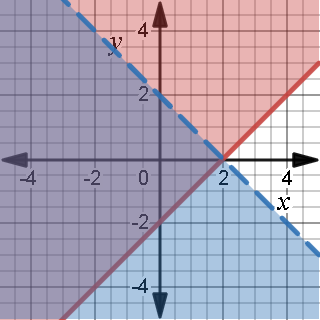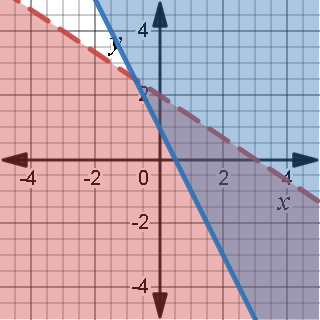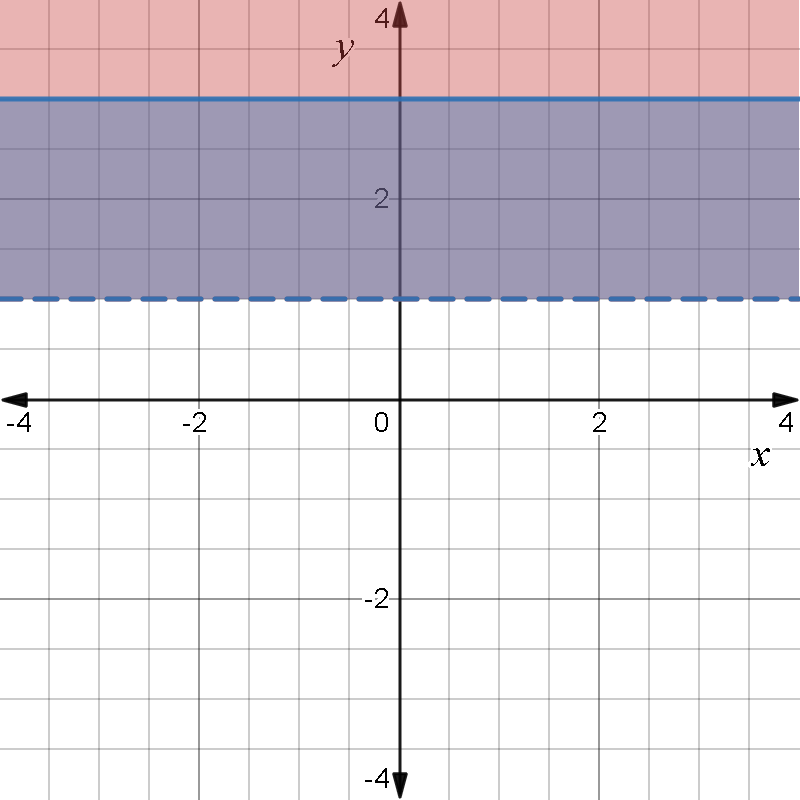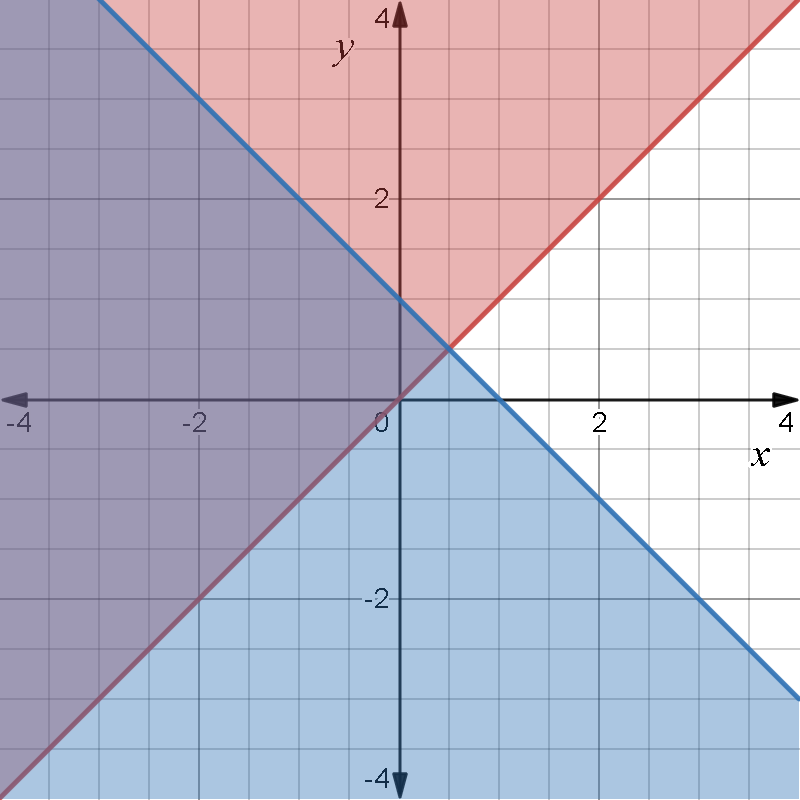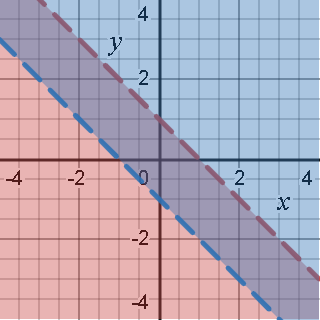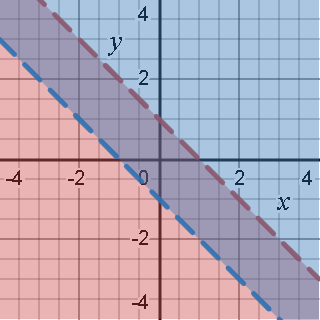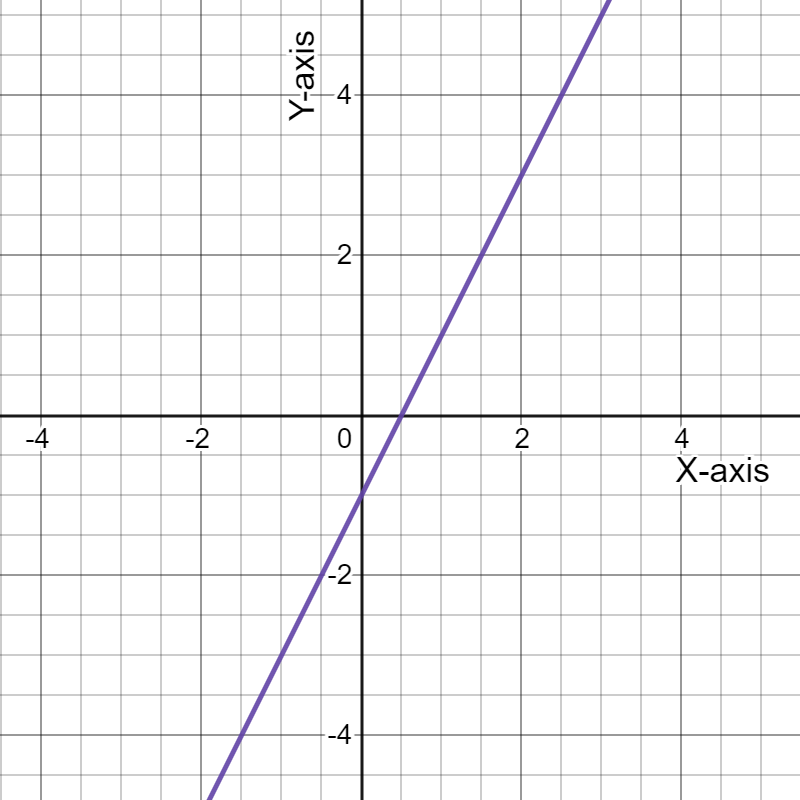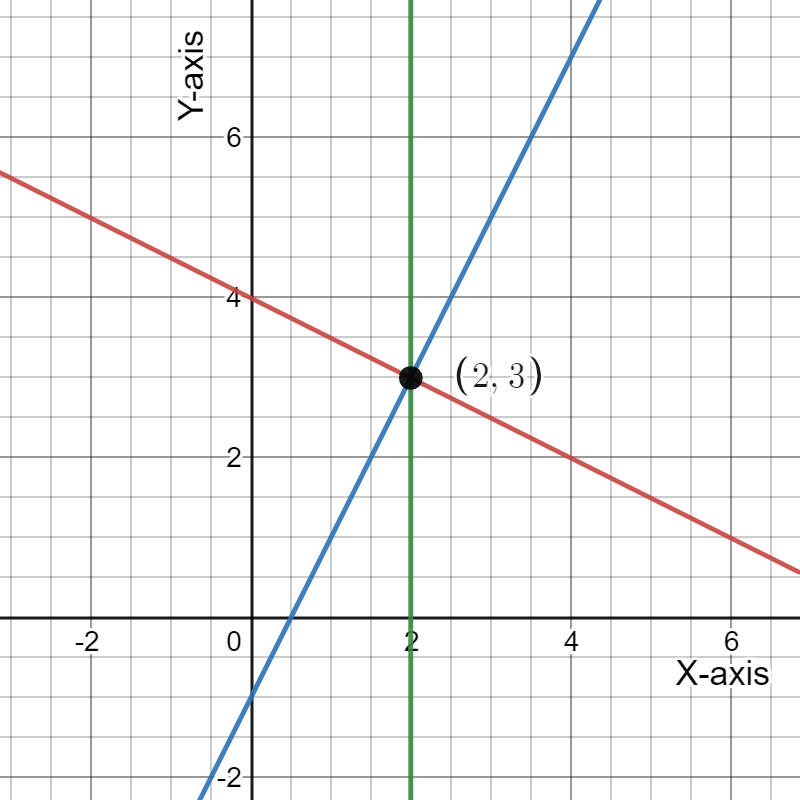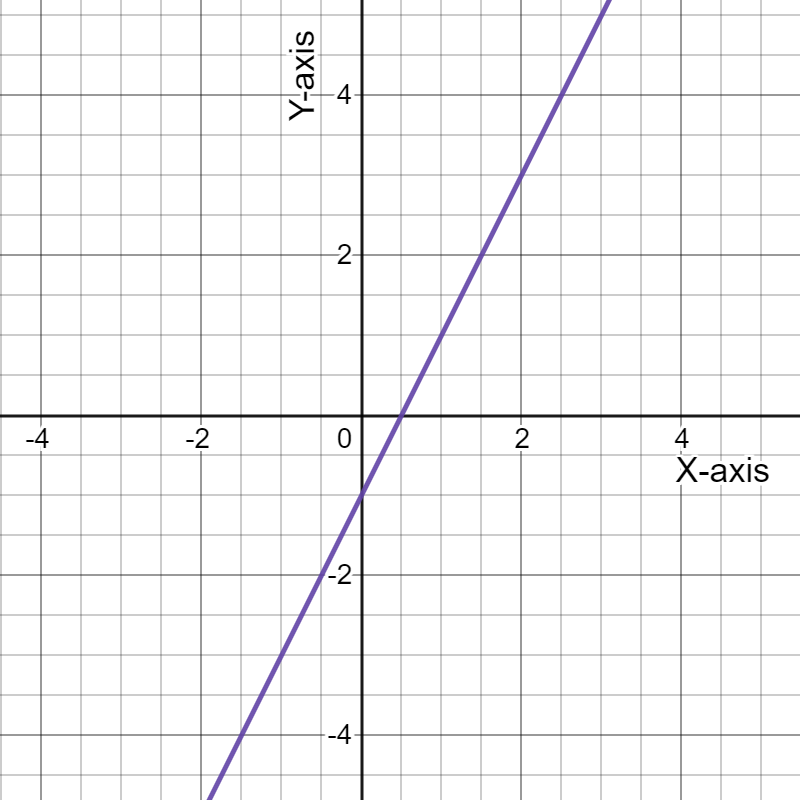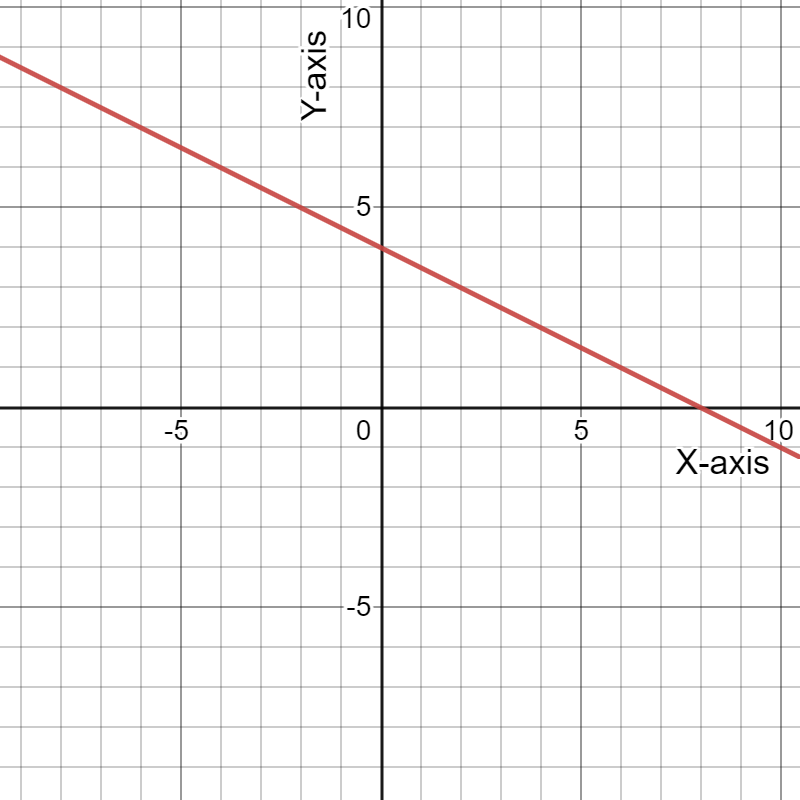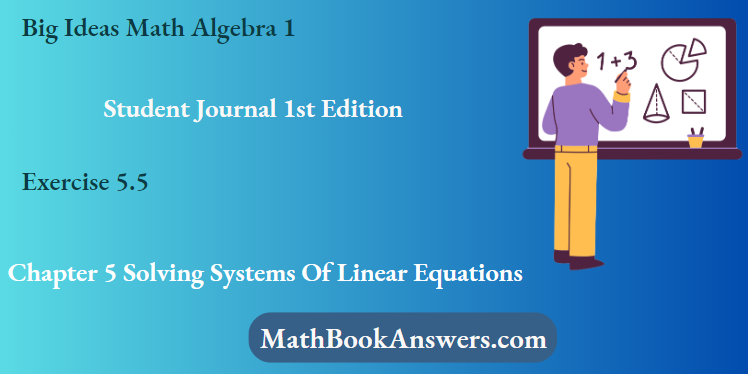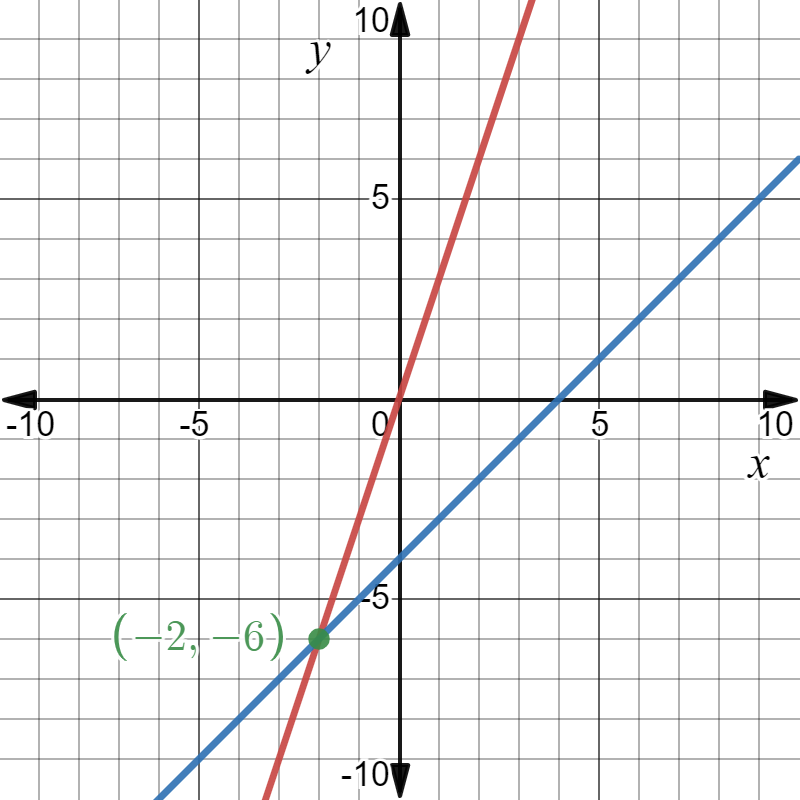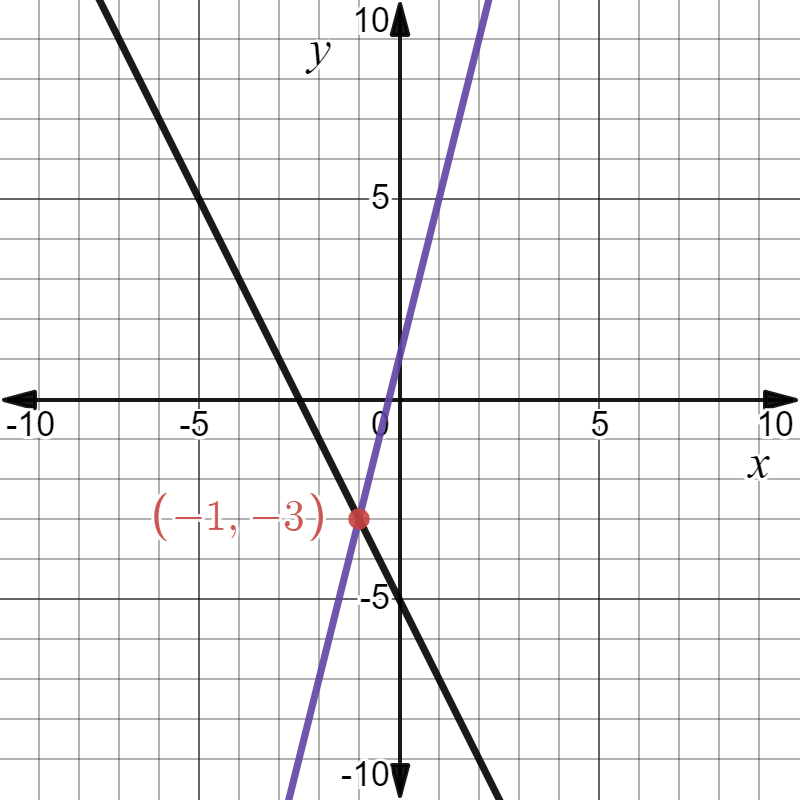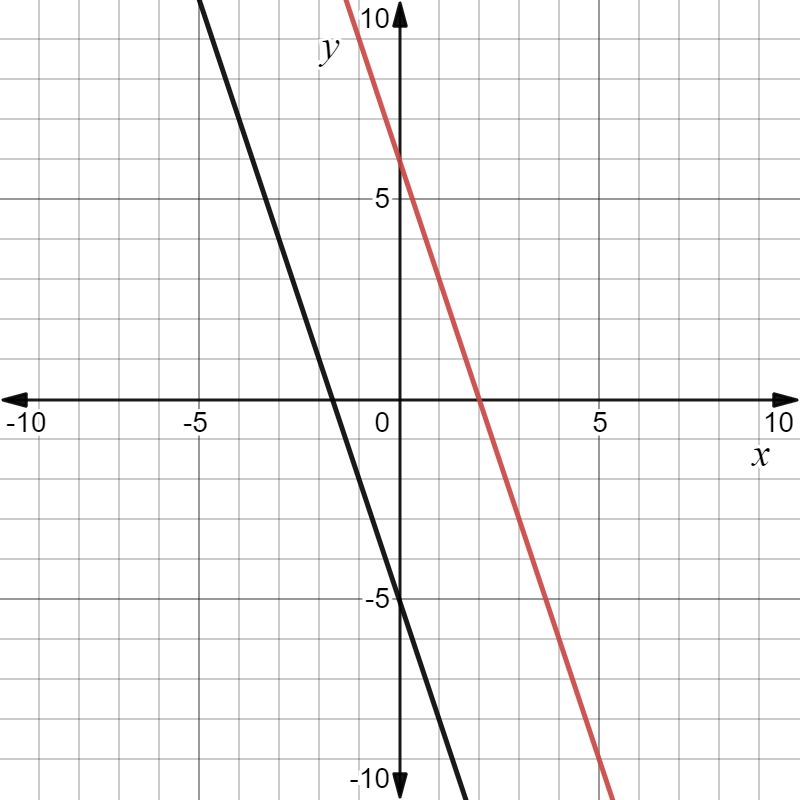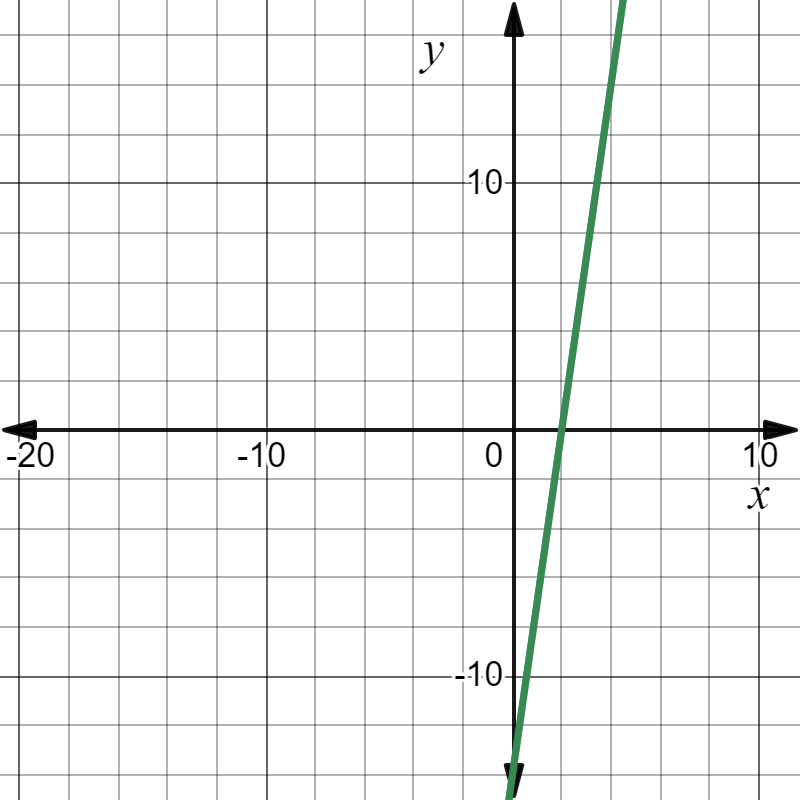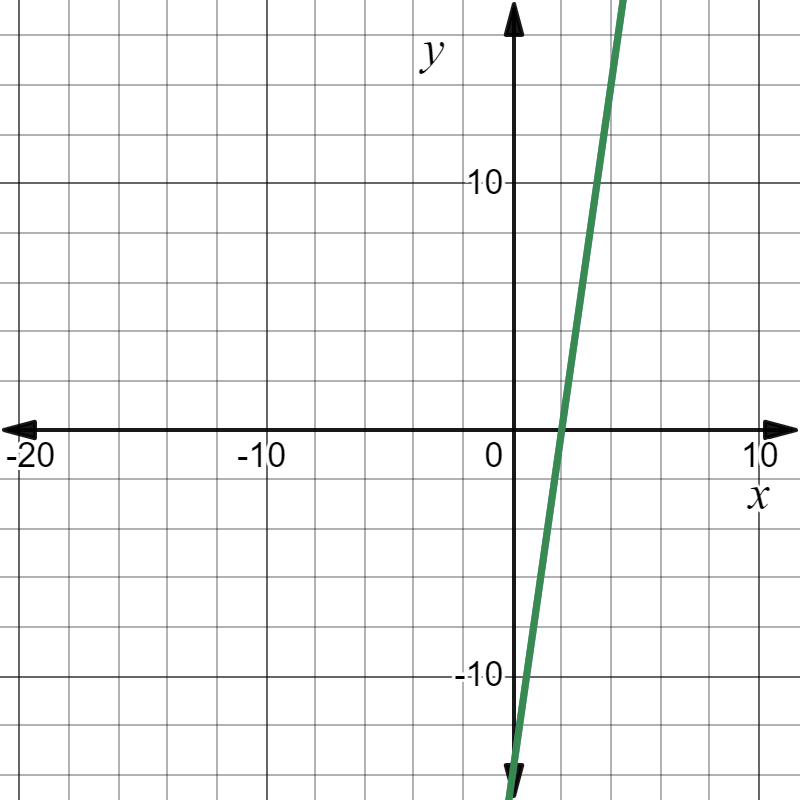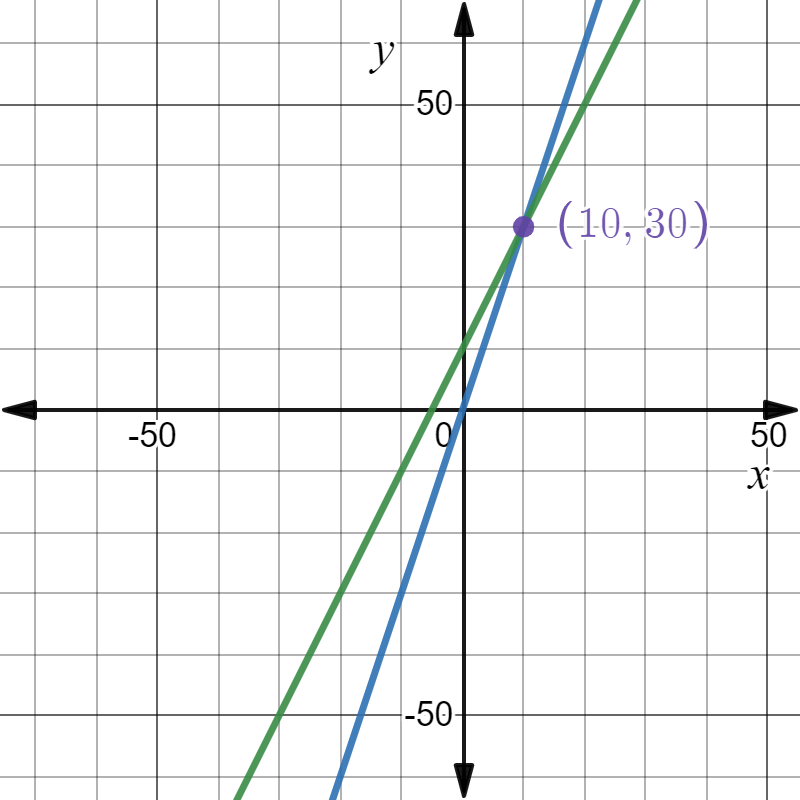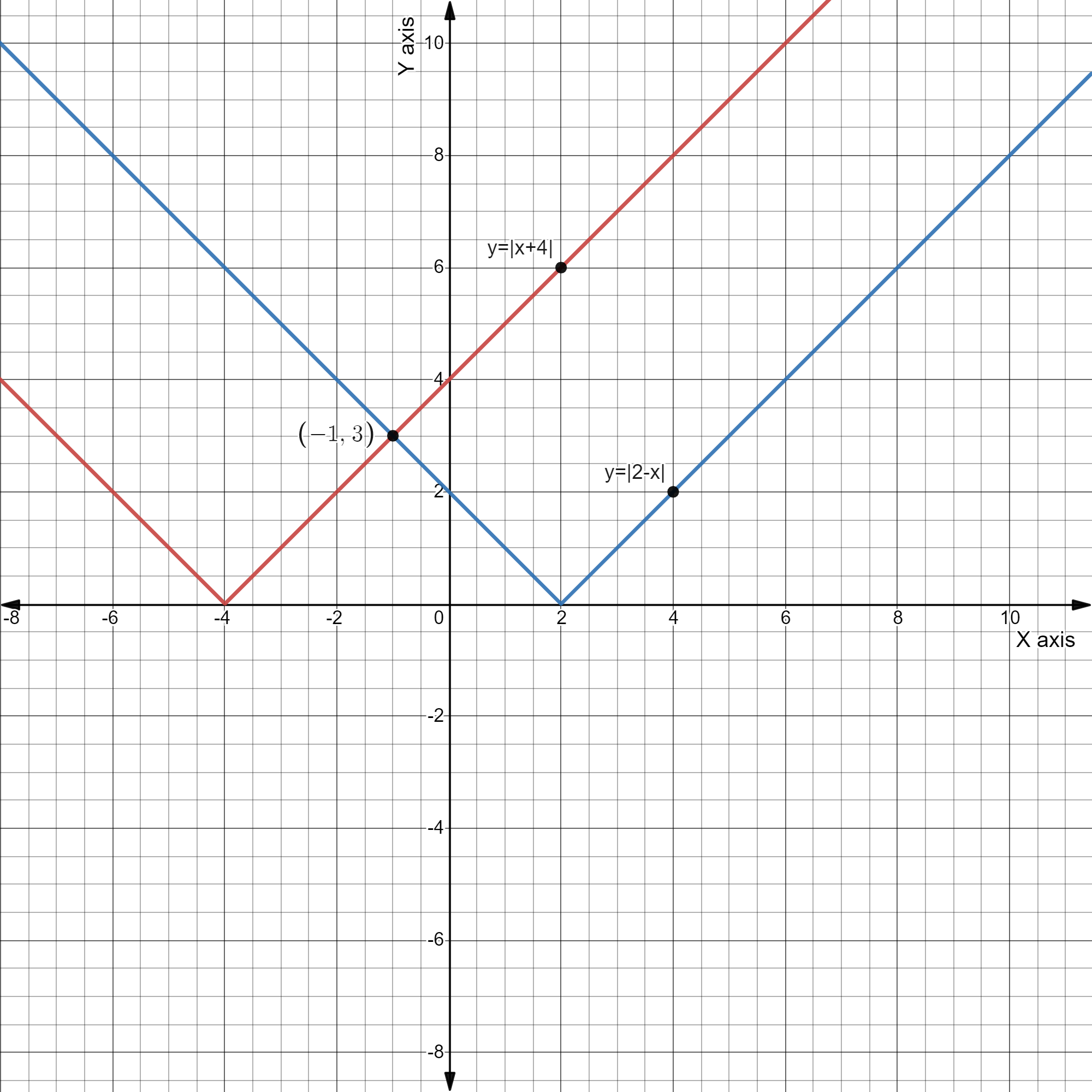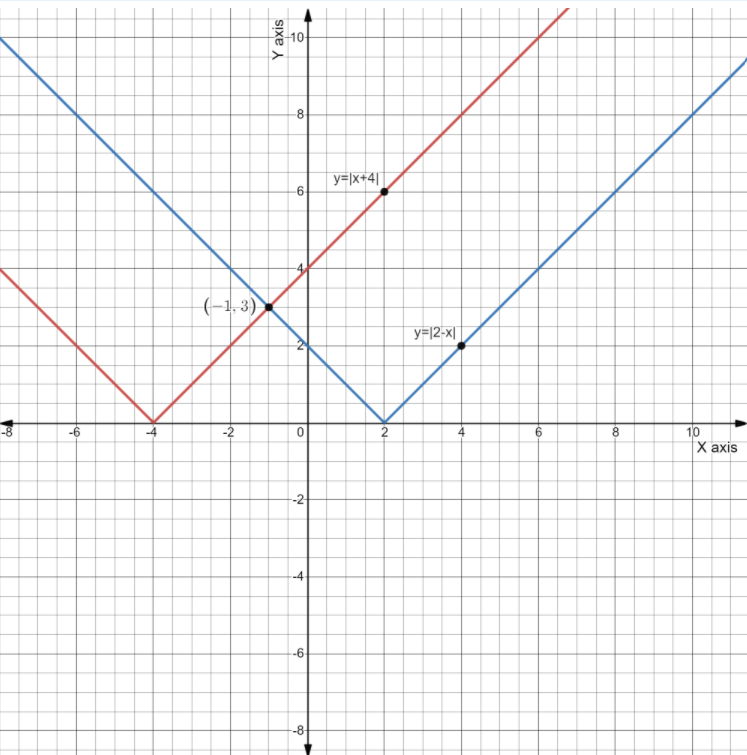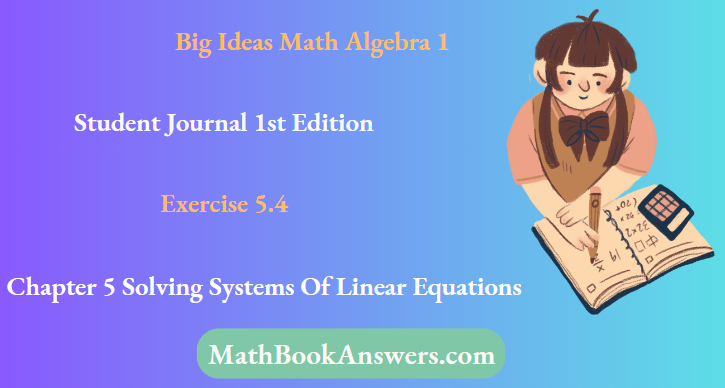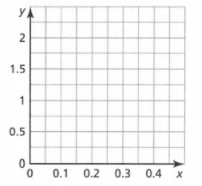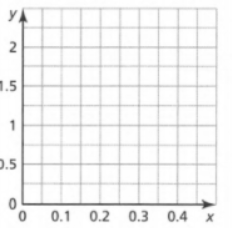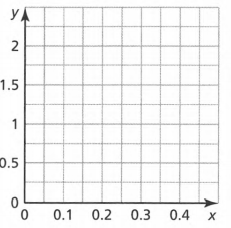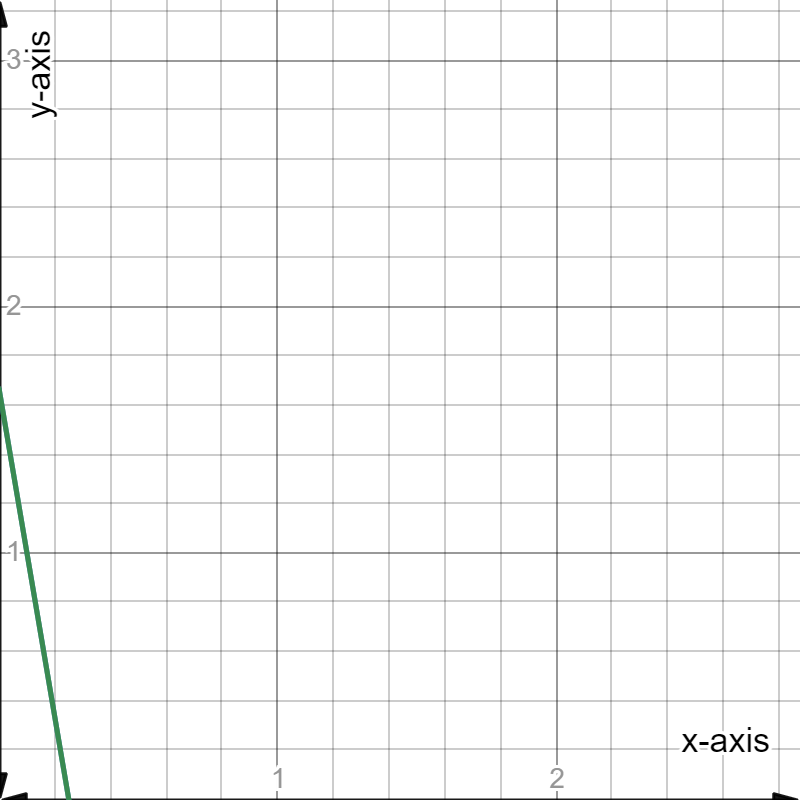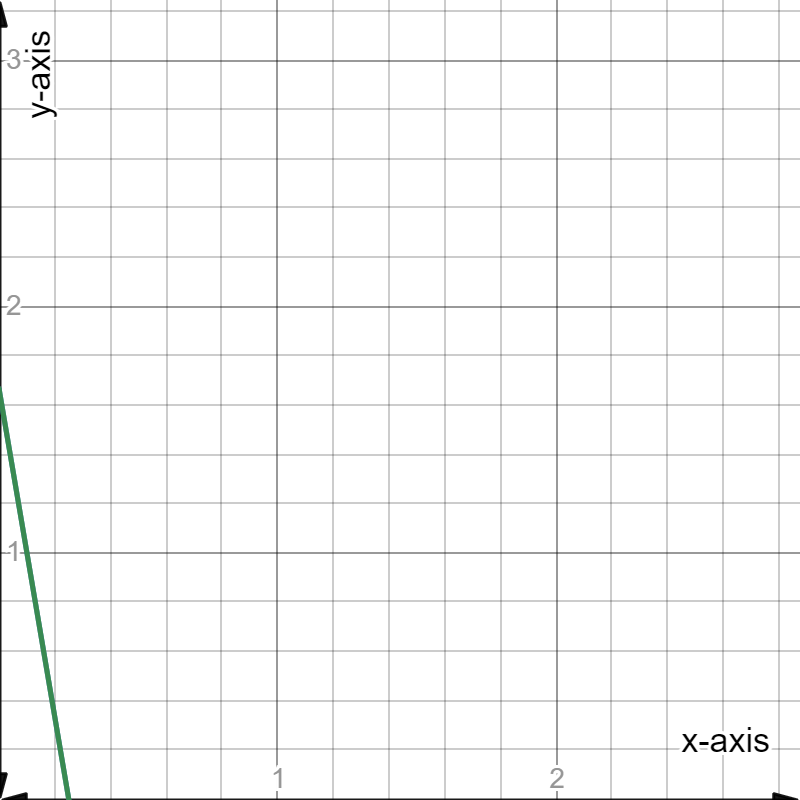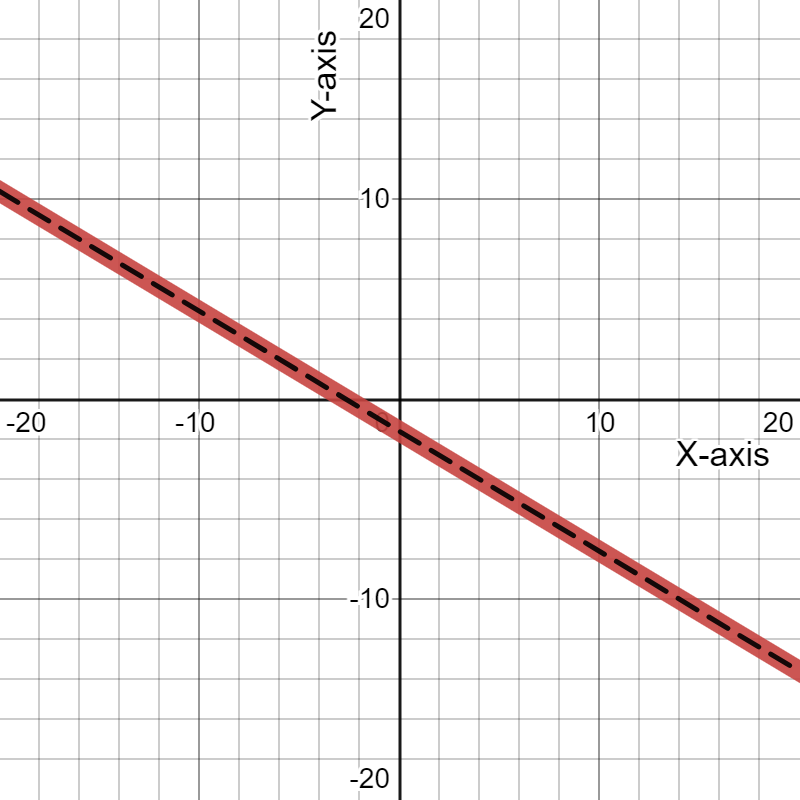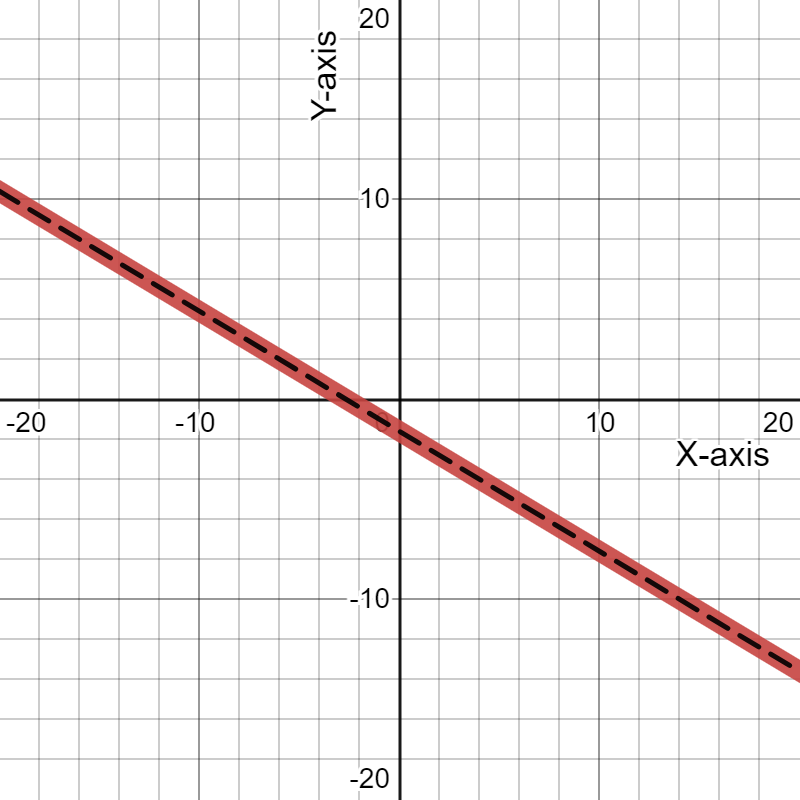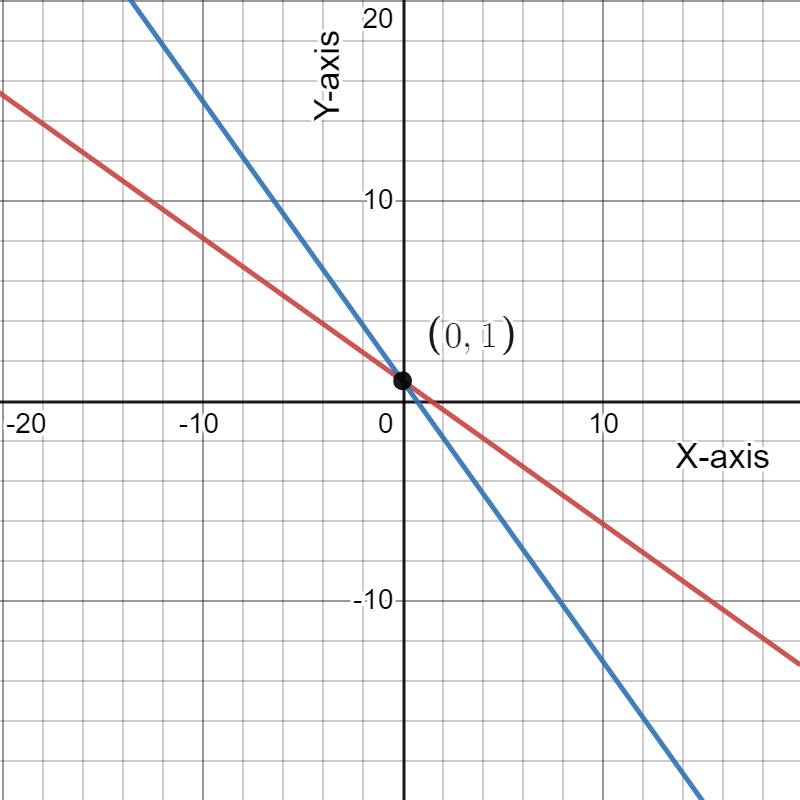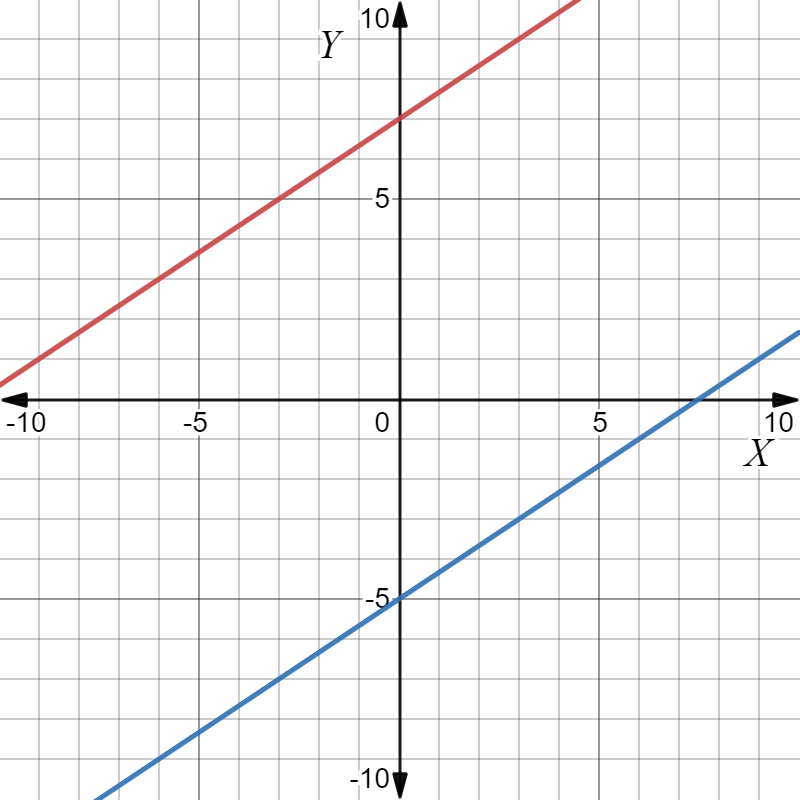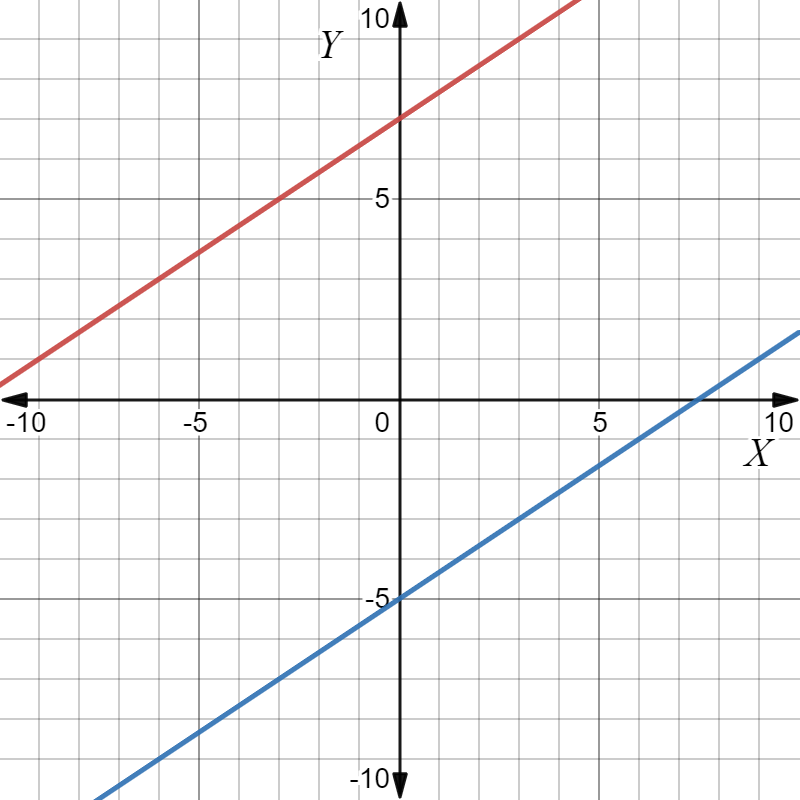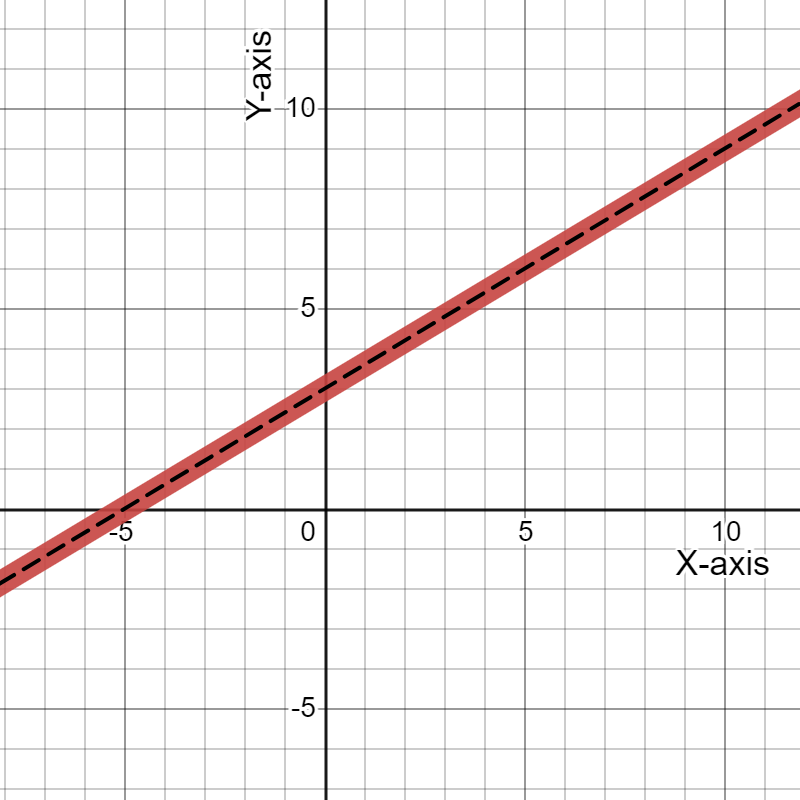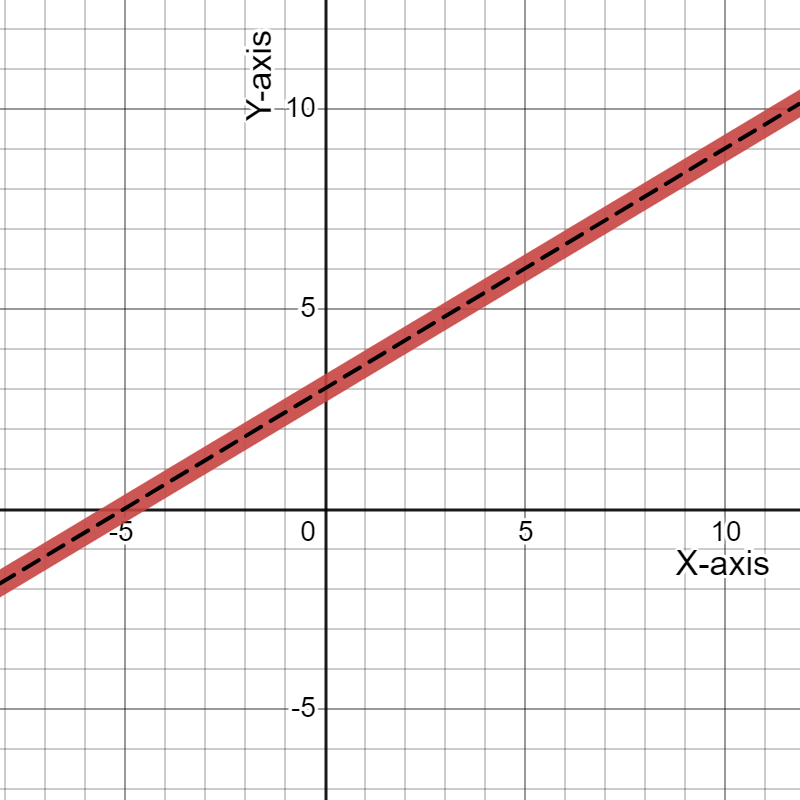Big Ideas Math Algebra 1 Student Journal 1st Edition Chapter 5 Solving Systems Of Linear Equations
Page 142 Essential Question Answer
We have to write how can we use the elimination method to solve a system of linear equations.
Multiply both the given equations by some suitable non-zero constants to make the coefficients of any one of the variables numerically equal.
Add or subtract one equation from the other in such a way that one variable gets eliminated.
We will get the value of one variable. Substitute value of the variable in the original equation to get value of another variable.
The elimination method is the best choice of use when the equations are in the standard form ax+by=c, and all the variables have coefficients other than 1.
Big Ideas Math Algebra 1 Chapter 5 Exercise 5.3 Solutions
Page 142 Exercise 1 Answer
Given: The price for drink and sandwich you purchased is $4.50 and your friend purchases a drink and five sandwiches for $16.50.
To find Write a system of linear equations. Let x represent the price (in dollars) of one drink. Let y represent the price (in dollars) of one sandwich.
Write system of equations based on given conditions using the model number of drinks · price per drink + number of sandwiches · price per sandwiches = total price
Let x represent the price (in dollars) of one drink. Let y represent the price (in dollars) of one sandwich.
Given the situation is you purchased drink and sandwich for $4.50
Equation is x + y = 4.50
The second situation is your friend purchases a drink and five sandwiches for $16.50
Equation is x + 5y = 16.50
System of equations is x + y = 4.50 x + 5y = 16.50
Read and Learn More Big Ideas Math Algebra 1 Student Journal 1st Edition Solutions
We have to subtract equation 1 from equation 2 and interpret the solution.
The system of linear equations is x + y = 4.50 x + 5y = 16.50
Subtract equation 1 from equation 2 we will get the value of y.
Substitute the value of yin in either of the equations to get the second variable.
We have:
x + y = 4.50 ——— (1)
x + 5y = 16.50 ——— (2)
Subtract (1) from (2)
x + y−(x + 5y) = 4.50 −16.50
⇒ x + y−x−5y = −12
⇒ −4y = −12
Divide both sides by −4
⇒ y=3
We can substitute the value of y in equation (1) to find value of another variable.
x + y = 4.50
⇒ x + 3 = 4.50
⇒ x = 4.50−3
⇒ x = 1.5
Subtracting equation 1 from equation 2 we get y = 3. We can use this result by substituting it in equation 1 to get value of another variable.
The solution of system of linear equations is x = 1.5,y = 3.
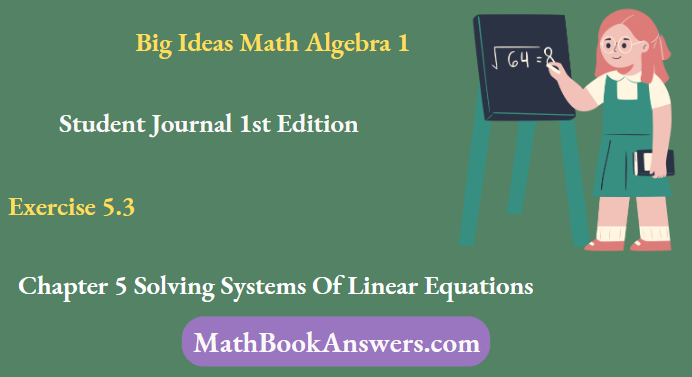
Page 142 Exercise 2 Answer
Given : System of linear equations are 3x−y = 6 3x + y = 0
To find Solve system using two methods.
Solve by method 1 that is subtract equation 2 from equation 1
Substitute value we get after subtraction in either of the equations.
Solve by method 2 that is add two equations.
Substitute value we get after addition in either of the equation.
We have:
3x −y = 6 ——– (1)
3x + y = 0 ——–(2)
Method 1: Subtract Equation 2 from Equation 1
⇒ 3x + y−(3x−y) =0−6
⇒ 3x+ y−3x + y =−6
⇒ 2y =−6
Divide both sides by 2
⇒ y=−3
Substitute value of y in equation (2)
3x + y = 0
⇒ 3x−3 = 0
⇒ 3x = 3
Divide both sides by 3
⇒ x=1
Method 2: Add the two equations
⇒ 3x−y + 3x + y = 6+0
⇒ 6x = 6
Divide both sides by 6
⇒ x = 1
Substitute x = 1 in equation (2)
3x + y = 0
⇒ 3(1) + y = 0
⇒ 3 + y = 0
⇒ y = −3
The solution is same for both methods:
We get solutions as x = −1, and y = 3.
I would prefer method 2 as addition is more simpler than subtraction.
Given : System of linear equations are 2x + y = 6, 2x−y =2
To find The Solution of a system of linear equations using two methods.
Solve by method- 1 that is subtract equation-(2) from the equation- (1).
Substitute value we get after subtraction in either of the equations.
Solve by method- 2 that is add two equations.
Substitute value we get after addition in either of the equation.
We have :
2x + y = 6 ——–(1)
2x−y = 2———-(2)
Method 1: Subtract Equation 2 from Equation (1)
⇒ 2x−y−(2x + y) =2−6
⇒ 2x−y−2x−y =−4
⇒ −2y =−4
⇒ y = 2
Substitute y = 2 in equation (2)
2x−y = 2
⇒ 2x−2 = 2
⇒ 2x = 4
⇒ x = 2
Method 2: Add both equations
⇒ 2x + y + (2x−y) = 6+2
⇒ 4x = 8
⇒ x = 2
Substitute x=2 in equation (2 )
2x−y = 2
⇒ 2(2)−y = 2
⇒ 4−y = 2
⇒ 4−2 = y
⇒ y = 2
Solution is same for both methods:
We get solutions as x = 2, and y = 2.
I would prefer method- 2 as addition is more simpler than subtraction.
Given : The system of linear equations are x−2y = −7, x + 2y = 5
To find the Solution of system of linear equations using two methods.
Solve by method 1 that is subtract equation-(2) from the equation-(1).
Substitute value we get after subtraction in either of the equations.
Solve by method 2 that is add two equations.
Substitute value we get after addition in either of the equation.
We have:
x−2y = −7——-(1)
x + 2y = 5 ——-(2)
Method 1: Subtract Equation (2) from Equation (1)
⇒ x + 2y−(x−2y) = 5−(−7)
⇒ x + 2y−x + 2y = 5 + 7
⇒ 4y = 12
⇒ y = 3
Substitute y=3 in equation (2)
x + 2y = 5
⇒ x + 2(3) = 5
⇒ x + 6 = 5
⇒ x =−1
Method 2: Add both equations
⇒ x−2y + x + 2y =−7 + 5
⇒ 2x = −2
⇒ x = −1
Substitute x=−1 in equation (2)
x + 2y = 5
⇒ −1 + 2y = 5
⇒ 2y = 6
⇒ y = 3
The solution is same for both methods:
We get solutions as x = −1, and y = 3.
I would prefer method as addition is more simpler than subtraction.
Solving Systems Of Equations Exercise 5.3 Answers
Page 143 Exercise 3 Answer
Given: The System of linear equation is 2x + y = 7, x + 5y = 17
To find Can we eliminate a variable by adding or subtracting the equations as they are.
We cannot eliminate variable by adding or subtracting the equations as they are because the coefficient of x or y is not similar, so it cannot eliminate one variable.
To eliminate the variable we can either multiply equation 1 by 5 and subtract both equations or we can multiply equation 2 by 2 and subtract equations to get a solution.
We cannot eliminate variables by adding or subtracting the equations as they are.
We can either multiply equation 1 by 5 or we can multiply equation 2 by 2 to eliminate the variable.
Given: The system of linear equation is 2x+y=7, x+5y=17
To find Solution of equation
Multiply equation (1) by 5.
Subtract equation we get after multiplying equation (1) from equation ( 2 ) to get value of variable.
Substitute value we get in either of equation.
We have:
2x + y = 7 ——-(1)
x + 5y = 17———–(2)
Multiply equation (1) by 5
⇒ 10x + 5y = 35
Subtract equation we got after multiplying equation (1) from equation (2)
⇒ 10x + 5y−(x + 5y) = 35−17
⇒ 10x + 5y−x−5y = 18
⇒ 9x = 18
Divide both sides by 9
⇒ x = 2
Substitute x=2 in equation (1)
2x + y = 7
⇒ 2(2)+y =7
⇒ 4 + y = 7
Subtract both sides by 4
⇒ y = 7−4
⇒ y = 3
By comparing with their partner, he also got same solution but he multiplied equation (2) by 2.
Solution of system is x = 2,y = 3 Partner got same solution but he multiplied equation 2 by 2.
Page 143 Exercise 4 Answer
We have to write how can we use elimination method to solve a system of linear equations.
Multiply both the given equations by some suitable non-zero constants to make the coefficients of any one of the variables numerically equal.
Add or subtract one equation from the other in such a way that one variable gets eliminated.
We will get the value of one variable.
Substitute the value of the variable in the original equation to get the value of another variable.
The elimination method is the best choice of use when the equations are in the standard form and all the variables have coefficients other than one.
Page 143 Exercise 5 Answer
We have to write when we can add or subtract the equations in a system to solve the system, when do we multiply.
We can add or subtract the equations in a system when the coefficients of one variable are opposites we add the equations to eliminate a variable and when the coefficients of one variable are equal we subtract the equations to eliminate a variable.
For example: Consider the system of equation x + y = 2 x−y = 3, in this system coefficient of variables are opposite so, we add the equations.
If the coefficient of variables are not equal we will multiply the variable with a suitable number to make the coefficient equal. Consider a system of linear equations as x + 2y = 5 2x + y = 2, here coefficients are not equal so we will multiply either of the equations to make coefficients similar.
When the coefficients of one variable are opposites we add the equations to eliminate a variable and when the coefficients of one variable are equal we subtract the equations. If the coefficient of variables is not equal we will multiply variables with suitable numbers to make the coefficient equal.
Big Ideas Math Student Journal Exercise 5.3 Explained
Page 143 Exercise 6 Answer
The system of equations in Exercise 3 is 2x + y = 7, x + 5y = 17.
We multiply the equation by a constant because the coefficient of the variable is not the same.
We do multiplication to make coefficients similar so we can add or subtract the equation to eliminate variables.
If we solve the system without multiplying we have to use the substitution method to get a solution.
We multiply the equation by a constant because the coefficient of the variable is not the same. If we solve the system without multiplying we have to use the substitution method to get a solution.
Page 145 Exercise 1 Answer
Given : System of linear equations x + 3y = 17, −x + 2y = 8
To find the Solution of the system of linear equations by elimination.
Add both equations to eliminate variables.
Substitute the value of the variable in either of the equations and find another value.
We have:
x + 3y = 17 ———–(1)
−x + 2y = 8 ———–(2)
Add both equations
⇒ x + 3y + (−x + 2y) = 17 + 8
⇒ x + 3y−x + 2y =25
⇒ 5y = 25
Divide both sides by 5
⇒ y = 5
Substitute y=5 in equation (1)
x + 3y = 17
⇒ x + 3(5) = 17
⇒ x + 15 = 17
Subtract both sides by 15
⇒ x = 17−15
⇒ x = 2
Solution of system of linear equations x+3y = 17,−x+2y = 8, is x = 2,y = 5.
Page 145 Exercise 2 Answer
Given: The system of linear equations is 2x−y = 5 , 5x + y = 16
To find the Solution of the system of linear equations by elimination.
Add both equations to eliminate variables.
Substitute the value of the variable in either of the equations and find another value.
We have:
2x−y = 5———– (1)
5x + y = 16———(2)
Add both equations
⇒ 2x−y + 5x + y=5 + 16
⇒ 7x = 21
Divide both sides by 7
x \(=\frac{21}{7}\)
⇒ x = 3
Substitute x = 3 in equation (2)
5x + y = 16
⇒ 5(3) + y = 16
⇒ 15 + y = 16
Subtract both sides by 15
⇒ y = 16−15
⇒ y = 1
Solution of system of linear equations is x = 3,y = 1.
Page 145 Exercise 3 Answer
Given: The system of linear equation is 2x + 3y = 10, −2x−y = −2
To find the Solution of the system of linear equations by elimination.
Add both equations to eliminate variables.
Substitute the value of the variable in either of the equations and find another value.
We have:
2x + 3y = 10——-(1)
−2x−y = −2 ——( 2)
Add both equations
⇒ 2x + 3y + (−2x−y) = 10 + (−2)
⇒ 2x + 3y−2x−y = 10−2
⇒ 2y = 8
Divide both sides by 2
⇒ y\(=\frac{8}{2}\)
⇒ y=4
Substitute y=4 in equation (1), and we get
2x + 3y=10
⇒ 2x + 3(4)=10
⇒ 2x + 12=10
Subtract both sides by 12
⇒ 2x=−2
Divide both sides by 2
⇒ x = −1
Solution of system of linear equation 2 x + 3y = 10,−2x−y = 2 is x = −1,y = 4.
Page 145 Exercise 4 Answer
Given : The system of linear equation is 4x + 3y = 6, −x−3y = 3
To find the Solution of the system of linear equations by elimination.
Add both equations to eliminate variables.
Substitute the value of the variable in either of the equations and find another value.
We have:
4x + 3y = 6——-(1)
−x−3y = 3 ——–(2)
Add both equations
⇒ 4x + 3y + (−x−3y) = 6 + 3
⇒ 4x + 3y−x−3y = 9
⇒ 3x = 9
Divide both sides by 3
⇒ y = 3
Substitute y = 3 in equation (2)
⇒ −x−3y = 3
⇒ −x−3(3) = 3
⇒ −x−9 = 3
Add both sides by 9
⇒ −x = 3 + 9
⇒ −x = 12
⇒ x = −12
Solution of the system of linear equations is x = −12,y = 3.
Chapter 5 Exercise 5.3 Solving Systems Practice
Page 145 Exercise 5 Answer
Given : The system of linear equation is 5x + 2y =−28, −5x + 3y = 8
To find the Solution of the system of linear equations by elimination.
Add both equations to eliminate variables.
Substitute the value of the variable in either of the equations and find another value.
We have:
5x + 2y =−28 ——- (1)
−5x + 3y = 8———(2)
Add both equations
⇒ 5x + 2y + (−5x+3y) =−28 + 8
⇒ 5x + 2y−5x + 3y =−20
⇒ 5y = −20
Divide both sides by 5
⇒ y =−4
Substitute y=−4 in equation (2)
−5x + 3y = 8
⇒ −5x + 3(−4) = 8
⇒ −5x−12 = 8
Add both sides by 12
⇒ −5x = 8 + 12
⇒ −5x = 20
Divide both sides by −5
⇒ x\(=\frac{-20}{5}\)
⇒ x=−4
Solution of the system of linear equation is x = −4, y =−4.
Page 145 Exercise 6 Answer
Given: The system of linear equation is 2x−5y = 8, 3x + 5y =−13
To find the Solution of the system of linear equations by elimination.
Add both equations to eliminate variables.
Substitute the value of the variable in either of the equations and find another value.
We have:
2x−5y = 8———(1)
3x + 5y =−13—–(2)
Add both equations
⇒ 2x−5y + 3x + 5y = 8 + (−13)
⇒ 5y = −5
Divide both sides by 5
⇒ y =−1
Substitute y=−1 in equation (1)
2x−5y = 8
⇒ 2x−5(−1) = 8
⇒ 2x+5 = 8
Subtract both sides by 5
⇒ 2x = 3
Divide both sides by 2
⇒ x\(=\frac{3}{2}\)
Solution of system of linear equation 2x−5y = 8, 3x + 5y =−13 is x\(=\frac{3}{2}\), y = −1.
Page 145 Exercise 7 Answer
Given : The system of linear equations 2x + y =12, 3x−18 = y
To find the Solution of the system of linear equations by elimination.
Add both equations to eliminate variables.
Substitute the value of a variable in either of the equations and find another value.
We have:
2x + y=12——(1)
3x−18 = y
which can be written as 3x−y = 18 ——- (2)
Add both equations
⇒ 2x + y + 3x−y =12 + 18
⇒ 5x = 30
Divide both sides by 5
⇒ x\(=\frac{30}{5}\)
⇒ x = 6
Substitute x = 6 in 3x−18 = y ,we get
⇒ 3(6)−18 = y
⇒ 18−18 = y
⇒ y = 0
Solution of the system of linear equation is x = 6,y = 0.
Big Ideas Math Algebra 1 Exercise 5.3 Guide
Page 145 Exercise 8 Answer
Given: The system of equations is
4x + 3y = 14———(1)
2y = 6 + 4x———-(2)
We have to solve the system of linear equations by elimination.
Use the elimination method and eliminate one variable and then find the value of the other.
Also, check the solution.
Arrange the equation (2) in a proper manner
2y = 6 + 4x
⇒ −4x +2y = 6
Thus, the revised system of equations is
⇒ 4x + 3y = 14
⇒ −4x + 2y = 6
Adding these equations, we get.
⇒ 5y = 20
⇒ y = 4
Substitute the value of y in equation (2)
⇒ −4x + 2y = 6
⇒ −4x + 2(4) = 6
⇒ −4x = 6−8
⇒ −4x = −2
⇒ x\(=\frac{1}{2}\)
Check the solution:
For equation 1:
2y = 6 + 4x
2(4)=6+4(\(\frac{1}{2}\))
8=6+2
8=8
For equation 2:
4x + 3y = 14
4(\(\frac{1}{2}\)) +3(4)=14
2 + 12 = 14
14= 14
Since the statement is true. Therefore, the solution is verified.
The solution of the system of linear equations 4x + 3y = 14 ,2y = 6 + 4x is x\(=\frac{1}{2} \) , y=4.
Page 145 Exercise 9 Answer
Given: The system of equations is −4x = −2 + 4y, −4y = 1−4x.
We have to solve the system of linear equations by elimination.
Use the elimination method and eliminate one variable and then find the value of the other.
Also, check your solution.
Rearrange the equations
⇒ −4x−4y = −2
⇒ 4x−4y = 1
Add both equations, and we get
⇒ -8y = -1
⇒ y=\(\frac{1}{8}\)
Substitute the value of y in equation one, and we get
−4x−4y =−2
⇒ −4x−4(\(\frac{1}{8}\))=−2
⇒ − 4x-\(\frac{1}{2}\)=-2
⇒ −8x−1 = −4
⇒ −8x = −4+1
⇒ −8x = −3
⇒ x=\(\frac{3}{8}\)
Check the solution:
For equation 1:
−4x =−2 + 4y
⇒ \(-4\left(\frac{3}{8}\right)\)=\(-2+4\left(\frac{1}{8}\right)\)
⇒ \(-\frac{3}{2}\)=\(-2+\frac{1}{2}\)
⇒ \(-\frac{3}{2}\)=\(\frac{-4+1}{2}\)
⇒ \(-\frac{3}{2}\)=\(-\frac{3}{2}\)
For equation 2:
−4y =1 − 4x
⇒ \(-4\left(\frac{1}{8}\right)\)=1-\(-4\left(\frac{3}{8}\right)\)
⇒ \(-\frac{-1}{2}\)=1-\(\frac{3}{2}\)
⇒ \(-\frac{-1}{2}\)=\(-\frac{-1}{2}\)
⇒ Thus the statement is true for both equations.
The solution of the system of linear equations −4x=−2+4y, −4y = 1−4x is x=\(\frac{3}{8}\),y=\(\frac{1}{8}\).
Page 146 Exercise 10 Answer
Given: The given system of equations is x + 2y = 20, 2x + y = 19.
We have to solve the system of linear equations by elimination.
Use the elimination method and eliminate one variable and then find the value of the other.
Also, check the solution.
The equations are given :
x + 2y = 20 ——–(1)
2x + y = 19———-(2)
Multiply the equation x + 2y = 20 one by 2
⇒ 2x + 4y = 40.
Subtract equation (1) from the equation (2)
⇒ 2x + 4y = 40
⇒ −(2x + y = 19)
we get
⇒ 3y = 21
⇒ y = 7
Substitute the value of y in the equation (1)
⇒ x + 2y = 20
⇒ x + 2(7) = 20
⇒ x +14 = 20
⇒ x = 20−14
⇒ x = 6.
Check the solution:
For equation 1:
x + 2y = 20
⇒ 6 + 2(7) = 20
⇒ 6 + 14 = 20
⇒ 20 = 20
For equation 2:
2x + y = 19
⇒ 2(6) + 7 = 19
⇒ 12 + 7 = 19
⇒ 19 = 19
Since the statement is true. Therefore, the solution is verified.
The solution of the system of linear equations x + 2y = 20, 2x + y = 19 by elimination is x = 6 y = 7.
Page 146 Exercise 11 Answer
Given: The system of equations is 3x−2y =−2, 4x−3y =−4.
We have to solve the system of linear equations by elimination.
Use the elimination method and eliminate one variable and then find the value of the other.
Also, check the solution.
The equations are given :
3x−2y =−2——–(1)
4x−3y =−4———(2)
Multiply the equation 3x−2y =−2 by 3 and equation 4x−3y =−4 by 2 , we get
⇒ 9x−6y = −6
⇒ 8x−6y = −8
Subtracting the above equations gives
⇒ x = 2.
Substitute the value of x in equation (1)
3x−2y = −2
⇒ 3(2)−2y = −2
⇒ 6−2y = −2
⇒ −2y = −8
⇒ y = 4
Check the solution:
For equation 1:
⇒ 3x−2y =−2
⇒ 3(2)−2(4) =−2
⇒ 6−8 =−2
⇒ −2 =−2
For equation 2:
⇒ 4x−3y =−4
⇒ 4(2)−3(4) =−4
⇒ 8−12 =−4
⇒ −4 =−4
Since the statement is true. Therefore, the solution is verified.
The solution of the system of linear equations 3x−2y =−2, 4x−3y =−4 by elimination is x = 2, y = 4.
Page 146 Exercise 12 Answer
Given: The given system is
9x + 4y = 11——-(1)
3x−10y = −2——-(2)
We have to solve the system of linear equations by elimination.
Use the elimination method and eliminate one variable and then find the value of the other.
Also, check the solution.
Multiply the second equation 3 x−10y =−2 by −3
⇒ −9x + 30y = 6
Now, add these two equations
⇒ 9x + 4y = 11
⇒ −9x + 30y =6
We get
⇒ 34y = 17
⇒ y\(\frac{1}{2}\)
Substitute the value of y in the equation (1)
9x + 4y = 11
⇒ 9x + 4(\(\frac{1}{2}\))=11
⇒ 9x + 2=11
⇒ 9x = 11−2
⇒ 9x = 9
⇒ x =1.
Check the solution:
For equation 1:
3x−10y =−2
⇒ 3(1)−10(\(\frac{1}{2}\))=−2
⇒ 3−5 =−2
⇒ −2 =−2
For equation 2:
9x + 4y = 11
⇒ 9(1)+4(\(\frac{1}{2}\))=11
⇒ 9+2 = 11
⇒ 11 = 11
Since the statement is true. Therefore, the solution is verified.
The solution of the system of linear equations 9x + 4y =11 , 3x−10y =−2 by elimination is x = 1, y=\(\frac{1}{2}\).
Page 146 Exercise 13 Answer
Given: The given system is 4x + 3y = 21, 5x + 2y = 21.
It is required to solve the system of linear equations by elimination.
Elimination method is used to eliminate one variable and solve the equation for the other, then substituting the known value, the other value is also evaluated.
The equations are given:
4x + 3y = 21−−−(1)
5x + 2y =21−−−(2)
Multiply the equation (1) by 2 and equation (2) by 3
⇒ 8x + 6y = 42
⇒ 15x + 6y = 63
Subtract them, and we get
⇒ −7x =−21
⇒ x = 3.
Substitute the value x of in equation (1)
4x + 3y = 21
⇒ 4(3) + 3y = 21
⇒ 12 + 3y = 21
⇒ 3y = 21−12
⇒ 3y = 9
⇒ y = 3
Check the solution:
For equation 1:
5x + 2y = 21
⇒ 5(3) + 2(3) = 21
⇒ 15 + 6 = 21
⇒ 21 = 21
For equation 2:
4x +3y = 21
⇒ 4(3) + 3(3) = 21
⇒ 12 + 9 = 21
⇒ 21 = 21
Since the statement is true. Therefore, the solution is verified.
The solution of the system of linear equations 4x + 3y = 21, 5x + 2y = 21 by elimination is x = 3, y = 3.
How To Solve Exercise 5.3 Big Ideas Math Chapter 5
Page 146 Exercise 14 Answer
Given: The given system is −3x−5y = −7, −4x−3y = −2.
It is required to solve the system of linear equations by elimination.
Elimination method is used to eliminate one variable and solve the equation for the other, then substituting the known value, the other value is also evaluated.
The equations are given :
−3x−5y=−7——(1)
−4x−3y=−2——(2)
Multiply the equation (1) by 4 and equation (2) by 3
⇒ −12x−20 y = −28
⇒ −12x−9y =−6
Subtract them, and we get
⇒ −11y = −22
⇒ y = 2
Substitute the value of y in equation (1)
−3x−5y =−7
⇒ −3x−5(2) =−7
⇒ −3x−10 =−7
⇒ −3x =−7 + 10
⇒ −3x = 3
⇒ x =−1
Check the solution:
For equation 1:
⇒ −4x−3y = −2
⇒ −4(−1)−3(2) = −2
⇒ 4−6 = −2
⇒ −2 = −2
For equation 2:
−3x−5y = −7
⇒ −3(−1)−5(2) = −7
⇒ 3−10 =−7
⇒ −7 =−7
Since the statement is true. Therefore, the solution is verified.
The solution of the system of linear equations −3x−5y = −7, −4x−3y = −2 by elimination is x = −1, y = 2.
Page 146 Exercise 15 Answer
Given: The given system is 8x+4y=12, 7x+3y=10.
It is required to solve the system of linear equations by elimination.
Elimination method is used to eliminate one variable and solve the equation for the other, then substituting the known value, the other value is also evaluated.
The equations are given :
8x+4y=12——(1)
7x+3y=10—–(2)
Multiply the equation (1) by 3 and equation (2) by 4
⇒ 24x + 12y=36
⇒ 28x + 12y=40
Subtract them, and we get
⇒ −4x =−4
⇒ x =1.
Substitute the value of x in equation (1)
⇒ 8x + 4y =12
⇒ 8(1) + 4y =12
⇒ 4y = 12−8
⇒ 4y = 4
⇒ y = 1
Check the solution:
For equation 1:
7x + 3y = 10
⇒ 7(1) + 3(1) = 10
⇒ 7 + 3 = 10
For equation 2:
8x + 4y = 12
⇒ 8(1) + 4(1) = 12
⇒ 8 + 4=12
⇒ 12 = 12
Since the statement is true. Therefore, the solution is verified.
The solution of the system of linear equations 8x + 4y = 12, 7x + 3y = 10 by elimination is x = 1, y = 1.
Big Ideas Math Chapter 5 Exercise 5.3 Answer Key
Page 146 Exercise 16 Answer
Given: The given system is 4x+3y=−7, −2x−5y=7.
It is required to solve the system of linear equations by elimination.
Elimination method is used to eliminate one variable and solve the equation for the other, then substituting the known value, the other value is also evaluated.
The equations are given:
4x +3y = −7—–(1)
−2x−5y = 7—–(2)
Multiply the equation (2) by 2
4x + 3y = −7
⇒ −4x−10y = 14
Add them, and we get
⇒ −7y = 7
⇒ y = −1
Substitute the value of y in equation (1)
4x + 3y =−7
⇒ 4x + 3(−1) =−7
⇒ 4x =−7+3
⇒ 4x = −4
⇒ x = −1
Check the solution:
For equation 1:
4x + 3y =−7
⇒ 4(−1) + 3(−1) =−7
⇒ −4−3 = −7
⇒ −7 = −7
For equation 2:
−2x−5y = 7
⇒ −2(−1)−5(−1) = 7
⇒ 2+5 = 7
⇒ 7 = 7
Since the statement is true. Therefore, the solution is verified.
The solution of the system of linear equations 4x+3y = −7, −2x−5y = 7 by elimination is x =−1, y =−1.
Page 146 Exercise 17 Answer
Given: The given system is 8x−3y = −9, 5x + 4y = 12.
It is required to solve the system of linear equations by elimination.
Elimination method is used to eliminate one variable and solve the equation for the other, then substituting the known value, the other value is also evaluated.
The equations are given :
8x−3y = −9——(1)
5x + 4y = 12——(2)
Multiply the equation (1) by 4 and equation (2) by 3
⇒ 32x − 12y = −36
⇒ 15x + 12y = 36
Add them, and we get
⇒ 47x = 0
⇒ x = 0
Substitute the value of x in equation (1)
8x−3y =−9
⇒ 0−3y =−9
⇒ y = 3
Check the solution:
For equation 1:
5x + 4y = 12
⇒ 5(0) + 4(3) = 12
⇒ 0 + 12 = 12
⇒ 12 = 12
For equation 2:
8x−3y =−9
⇒ 8(0)−3(3) = −9
⇒ −9 =−9
Since the statement is true. Therefore, the solution is verified.
The solution of the system of linear equations 8x−3y = −9,5x + 4y = 12 by elimination is x = 0 y = 3.
Page 146 Exercise 18 Answer
Given: The given system is −3x + 5y =−2, 2x−2y = 1.
It is required to solve the system of linear equations by elimination.
Elimination method is used to eliminate one variable and solve the equation for the other, then substituting the known value, the other value is also evaluated.
The equations are given:
−3x+5y=−2——–(1)
2x−2y=1———–(2)
Multiply the equation (1) by 2 and equation (2) by 3
⇒ −6x + 10y =−4
⇒ 6x−6y = 3
Add them, and we get
⇒ 4y = −1
⇒ y = \(\frac{-1}{4}\).
Substitute the value y of in the equation
−3x + 5y = −2
⇒ −3x + 5(\(\frac{-1}{4}\)) = −2
⇒ −12x−5 = −8
⇒ −12x = −8+5
⇒ −12x = −3
⇒ x = \(\frac{1}{4}\)
Check the solution:
For equation 1:
2x−2y = 1
⇒ 2(\(\frac{1}{4}\))−2(\(\frac{-1}{4}\))=1
⇒ \(\frac{1}{2}\)+\(\frac{1}{2}\)=1
⇒ \(\frac{2}{2}\) =1
⇒ 1 = 1
For equation 2:
−3x + 5y =−2
⇒ − 3(\(\frac{1}{4}\))+5(\(\frac{-1}{4}\))=−2
⇒ \(-\frac{3}{4}-\frac{5}{4}\)=−2
⇒ \(-\frac{8}{4}\)=−2
Since the statement is true. Therefore, the solution is verified.
The solution of the system of linear equations −3x+5y=−2, 2x−2y=1 by elimination is x=\(\frac{1}{4}\) , y=−\(\frac{1}{4}\).
Page 146 Exercise 19 Answer
Given: The sum of two numbers is 22 and the difference is 6.
It is required to Find the two numbers.
Using the elimination method, the numbers can be evaluated.
Let the numbers be x and y.
The sum of the numbers is 22, therefore, an equation that represents the sum is
⇒ x + y = 22.
The difference of the numbers is 6, therefore an equation to represent the difference is
⇒ x−y = 6.
Therefore the system of equations is
⇒ x + y = 22
⇒ x−y = 6
Adding the two equations, we get
⇒ 2x = 28
⇒ x = 14
Substitute the value of x in any of the equation
⇒ x−y = 6
⇒ 14−y = 6
⇒ −y = 6−14
⇒ −y = −8
⇒ y = 8
The two numbers are 14 and 8.
